
Unmasking Autism: Discovering the New Faces of Neurodiversity
by
Devon Price
Published 4 Apr 2022
When an Autistic person is not given resources or access to self-knowledge, and when they’re told their stigmatized traits are just signs that they’re a disruptive, overly sensitive, or annoying kid, they have no choice but to develop a neurotypical façade. Maintaining that neurotypical mask feels deeply inauthentic and it’s extremely exhausting to maintain.[5] It’s also not necessarily a conscious choice. Masking is a state of exclusion forced onto us from the outside. A closeted gay person doesn’t just decide one day to be closeted—they’re essentially born into the closet, because heterosexuality is normative, and being gay is treated as a rare afterthought or an aberration. Similarly, Autistic people are born with the mask of neurotypicality pressed against our faces. All people are assumed to think, socialize, feel, express emotion, process sensory information, and communicate in more or less the same ways.
…
Almost anyone can be viewed as defective or abnormal under our current medicalized model of mental illness—at least during particularly trying periods of their lives when they are depressed or their coping breaks down. In this way, neurotypicality is more of an oppressive cultural standard than it actually is a privileged identity a person has. Essentially no one lives up to neurotypical standards all of the time, and the rigidity of those standards harms everyone.[42] Much as heteronormativity harms straight and queer folks alike, neurotypicality hurts people no matter their mental health status. Autism is just one source of neurodiversity in our world. The term neurodiverse refers to the wide spectrum of individuals whose thoughts, emotions, or behaviors have been stigmatized as unhealthy, abnormal, or dangerous.
…
Though masking is incredibly taxing and causes us a lot of existential turmoil, it’s rewarded and facilitated by neurotypical people. Masking makes Autistic people easier to “deal” with. It renders us compliant and quiet. It also traps us. Once you’ve proven yourself capable of suffering in silence, neurotypical people tend to expect you’ll be able to do it forever, no matter the cost. Being a well-behaved Autistic person puts us in a real double bind and forces many of us to keep masking for far longer (and far more pervasively) than we want to. The Double Bind of Being “Well-Behaved” Psychiatrists and psychologists have always defined Autism by how the disability impacts neurotypical people.
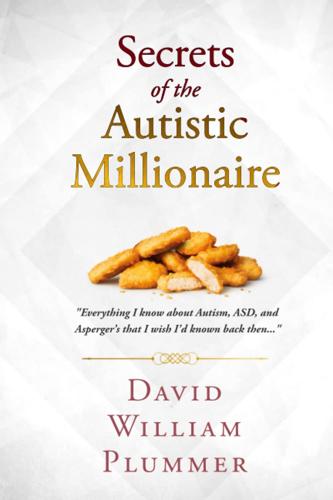
Secrets of the Autistic Millionaire: Everything I Know Now About Autism and Asperger's That I Wish I'd Known Then
by
David William Plummer
Published 14 Sep 2021
But the reaction is neither intentional nor elective––they just cannot ignore it. It is key to remember that the person with autism does not experience the stimulus in the same way that a neurotypical person would. Take the example of the scratchy tag in the neck of a new shirt. When a person with autism puts on such a shirt, it is little different from a neurotypical person doing the same. In the case of the neurotypical person, however, their brain quickly recognizes the sensation as unimportant and relegates it to the back of the mind, eventually going unnoticed. For 125 the person with autism, however, the brain does not seem to have the ability to selectively ignore certain stimuli.
…
In people with autism, this mirror neuron system is markedly different and does not function as it does in neurotypical people: those with autism must mechanically process what the other person is feeling, with only past experience being the basis of predictions for how their words and reactions will be met. There may be little to none of the internal intuition that the neurotypical seem to have from birth. In summary, to the individual with autism, it sometimes feels as though the neurotypical individuals have a sixth sense, an almost magical way of automatically intuiting what other people are feeling deep inside.
…
Being the “Other” Parent Before we examine the challenges in being a parent with autism, we should acknowledge the unique challenges of being the neurotypical parent in a mixed marriage with kids. There is simply a certain set of things that the partner with autism may not be good at –– let’s say something as simple as phoning to schedule appointments for the baby 203 with the pediatrician’s office. If the partner with autism isn’t comfortable on the phone, the neurotypical partner may wind up picking up that role by default. This only works, of course, if the partner with autism picks up other responsibilities and roles in the parenting arena that, in turn, compensate for or take work off the shoulders of the neurotypical parent.

I Am Autistic: a Workbook: Sensory Tools, Practical Advice, and Interactive Journaling for Understanding Life with Autism (By Someone Diagnosed With it): Sensory Tools, Practical Advice, and Interactive Journaling for Understanding Life with Autism (By Someone Diagnosed With it)
by
Chanelle Moriah
Published 25 Oct 2022
“Person with cancer,” “person with dementia,” “person with the flu.” Autism is not an illness. It’s not something that’s wrong with me. It’s a different neurotype. By saying that a person should use only PFL, you’re also saying that if you can’t identify with the neurotypical neurotype then you shouldn’t identify with a neurotype at all. Now, I know most people don’t say that they are neurotypical—heck, most of them don’t even know the word. But I can guarantee that if they did, they wouldn’t be told to say “person with a neurotypical neurotype.” I am autistic, and I love that about me. “Functioning” labels When I say “functioning” labels, I am referring to the terms “high-functioning” and “low-functioning.”
…
Honestly, though, in many contexts neither party will notice that there was a miscommunication, unless it comes up again later. Implying Implying something means to use unspoken language and assume that the listener understands. Many autistics will particularly struggle with implications, because our brains do not function or think in the same way as those of neurotypicals. Neurotypicals pick up on implications more easily because their brains function similarly to other neurotypicals. In the same way that autistics might not pick up on implications, we might not use them either. When I say: When you say: “Your music is loud.” I am simply stating a fact. I’m not necessarily complaining or asking you to turn it down.
…
This can sometimes lead to a lack of understanding between people who are motivated in different ways. Completing tasks: neurodivergent vs. neurotypical Here is a concept many autistics might relate to, which is potentially explained by the information on the previous two topics. Often, things that an autistic might be able to do inexplicably quickly, a neurotypical person may take much longer to complete. On the other hand, things that a neurotypical might be able to do quickly and efficiently may take an autistic person a lot longer. For example, I can finish any assignment to a high standard in a matter of hours, but getting the dishes done can take me up to half a day.

Living Well on the Spectrum
by
Valerie L. Gaus
Published 4 Feb 2011
It is, however, just as important not to overstate these differences. Focusing only on how you differ from neurotypical people is what leads to the feeling of being a member of another species expressed by some people on the spectrum, as mentioned in Chapter 1. Remember that you have many human characteristics in common with neurotypical people. For one thing, neurotypicals do not live completely without 39 40 LIFE ON THE SPECTRUM stress, and life for people on the spectrum is more than unremitting stress. I’ll remind you where common ground exists between you and neurotypical people throughout the next few chapters. Also keep in mind that no two people are alike and no one person with an ASD has all of the characteristics that I will discuss in these chapters.
…
Human Social Cognition As with the cognitive differences discussed in Chapter 2, ASDs involve social differences that can affect you in many ways, in all of the arenas of your life. To understand the social ramifications of having an ASD, it will help to know how neurotypical people operate successfully in social situations. How do neurotypical people understand other people? How do they seem to know what to say and do, even in brand-new situations? If you’re on the spectrum, you may very well have pondered these questions as you observed your neurotypical family members and friends navigating the social world with apparent ease. But these questions have also been asked for decades in an area of scientific psychology called social cognition.
…
Granted, I have had people with AS and HFA tell me that they feel as though they function so differently from others that they might as well be considered a separate species. It is true that brains of people on the spectrum function in unique ways that often make them stand out from neurotypical people, and I will be giving you many examples of that in this book. But we in the autism community, professionals and affected people alike, can sometimes get so caught up in defining these differences that we lose sight of the fact that every person on the spectrum is bound to every neurotypical person by one thing, and that is a common membership in the same species. Your unique brain is still a human brain. For that reason, the science of positive psychology and human strengths has everything to do with you.

We're Not Broken: Changing the Autism Conversation
by
Eric Garcia
Published 2 Aug 2021
In countless news reports, increased productivity is one of the features employers highlighted when talking about hiring autistic people. But Cunningham worries that this could backfire. “When people say that their autistic employees are a hundred and seventy percent more productive than their neurotypical counterparts, now that’s a huge problem,” she said. If autistic people are only slightly more productive, employers feel cheated for getting someone who is only, say, a hundred and forty percent more productive. The productivity myth can also make neurotypical employees resentful of autistic employees. There is also concern that these types of programs are focused on hiring autistic people into STEM fields only. Julia Bascom, the executive director of the Autistic Self Advocacy Network, said while certain companies do a good job and promote autistic people in management, there is a risk of just focusing on a certain type of autistic employee.
…
“We’re focused on helping employers to see that there are better ways of assessing people’s talents and competencies,” than just glad-handing and job interviews, which Kriss said has been shown to be a poor method for recruiting for neurotypicals too. “And just good management is going to get a lot of people success, [it’s] going to help a lot of people be more successful,” regardless of their neurotype. He also added that the company is moving beyond technology and financial services and hopes to work with the “intellectually challenged” but that there will be some hurdles because those aren’t the markets where Specialisterne started.
…
A survey of forty-three parents and their autistic sons in Belgium and the Netherlands in the Journal of Autism and Developmental Disorders found that half of the parents surveyed said they did not know that their children had masturbated or experienced an orgasm. Conversely, very few parents overestimated their neurotypical sons’ experiences. Gravino emphasized that one problem with teaching consent is that autistic people are often infantilized, so they typically don’t receive proper sex education. “So, when you’re always seeing someone as a child, you’re thinking that they’re innocent; you’re not seeing them as a fully realized adult with the same desires and needs as other neurotypical adults,” she said. “And so parents will say, ‘Well, no, if I tell my child about sex, they’re going to be thinking about sex and want to have sex.’

Loving Someone With Asperger's Syndrome: Understanding and Connecting With Your Partner
by
Cindy Ariel
Published 1 Mar 2012
It seems to ignore problems suffered by AS partners, who try hard to please the sometimes seemingly irrational (neurotypical) partner. Some partners with AS lament that they work hard to please their partners, but cannot change the core of their personalities. They then feel bad when they do not or cannot meet the neurotypical standard. The ultimate failure of relationships can lead many partners with AS to shut down and choose not to relate at all. This can also lead from frustration to anger and depression. Feeling Alone Mental health professionals understand that relationship problems between someone with AS and a neurotypical partner stem from issues on both sides.
…
These qualities, along with other AS advantages, provide a strong foundation for emotion-based attraction. But the main way that neurotypical partners seem to think about falling in love has to do with the way a love interest makes them feel and how they feel about her. Tony Attwood, a psychologist practicing in Australia who is well known for his work in the field of autism and Asperger’s syndrome, observes that partners of people on the autism spectrum often fall on the opposite end of the empathy continuum from their autistic partners. Attwood refers to the neurotypical partners as “intuitive experts” because they show a very good understanding of, and empathy toward, the perspectives of others (Attwood 2007b).
…
Building Bridges In one of the offices at our practice, a poster hangs with a picture of a bridge and a caption that reads, “Communication: Let’s build bridges, not walls.” Invariably, people with Asperger’s make cynical comments, such as, “How neurotypical.” A recent article in Psychology Today (Helgoe 2010) debunks the myth that most people are outgoing and sociable. But being sociable and extroverted is usually considered better than being shy or introverted. The way neurotypical people often like to build bridges of communication starts with eye contact and social chitchat, which don’t come naturally to people with AS. While social skills are important, we can relate to others using varying amounts of eye contact or chitchat.
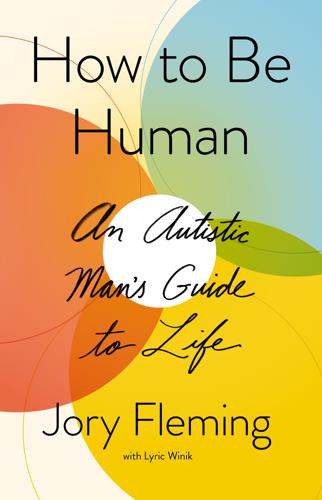
How to Be Human: An Autistic Man's Guide to Life
by
Jory Fleming
Published 19 Apr 2021
Even if two people who are very well-intentioned try to explain it to each other, there will be some things where both of us will shake our heads or shrug our shoulders and be like, I can’t get there.” Rather, Jory’s story is a window into what it is like to live in a world constructed for neurotypical brains when your mind is not. It is the story of what it is like to begin each day knowing that you are fundamentally different from every other person pouring coffee or tea into their mug. It is a memoir of life inside a gifted and disparate mind. As Jory shares his insights into thinking and navigating in a neurotypical world, it may lead you to question basic assumptions about how all of our minds work. * * * The first few times I spoke with Jory, my brain hurt.
…
Sometimes, I read the online exchanges and I wonder who truly struggles with communication here. 7 Personality Is a Choice Talking about Personality: A key component in how Jory interacts with the world is through personality. But he views personality in a very different way from most neurotypical people. Most people tend to view personality as something innate, which we are largely born with. Jory, however, views personality as a choice. He describes it as a feature that he has worked to construct internally, in order to relate better to the neurotypical people around him. His personality of choice may surprise you. He has chosen Ruthless Optimism. JORY: For most people, their environment and culture shape the components of their identity in some ways.
…
I can mess with pens or the leash or some other small object, because that is more acceptable. I still may sing a nonsense song in the grocery store, but I try to turn down the volume. I know that neurotypical people sometimes engage in some of these behaviors too. They may mess with their hair or bite their fingernails or chew on their lips or hold up their hands, but it seems that they are able to modify that behavior or dial it back a lot more smoothly than people with autism. It’s a bit like a musical composition, where different notes go together. When neurotypical people do these things, there’s something about it that doesn’t seem discordant or off, it blends. But when an autistic person engages in these behaviors, it has a different sound.
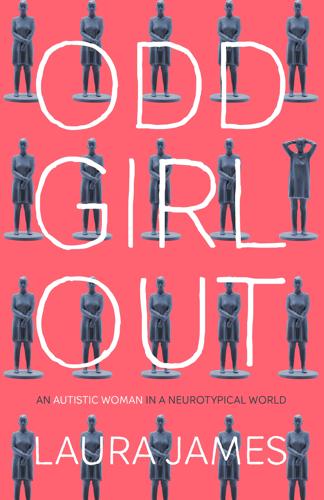
Odd Girl Out: An Autistic Woman in a Neurotypical World
by
Laura James
Published 5 Apr 2017
I might not strive for huge personal happiness, but is it wrong that I don’t try, even if it is just for Tim? Sarah Wild believes autistic happiness is different. She says: ‘We neurotypical people have to stop projecting what our concepts of happiness are onto the autistic population because autistic happiness is not the same. ‘Neurotypical professionals have ideas about living independently, having a job, being economically viable, having friends. But they’re all neurotypical indexes of happiness and no one has bothered to ask autistic people what makes them happy, what are the things they need to be able to function. That’s the next thing that needs to come.
…
I may not have been able to get my hair to flick in the way she did, but I could adopt her inscrutable expression, and power through the pain. Copying neurotypical behaviour is an exceptionally strong coping mechanism in most autistic girls. Unlike boys with autism, who are often happy to strike out on their own and just be themselves, girls tend to have a strong need to fit in. Mimicking the behaviour, style of speech, interests and social interactions of others provides something akin to a blueprint for life. While neurotypical girls have an innate understanding of how to behave, autistic girls tend to have to learn these behaviours by studying how others do them.
…
When I talk to adults with Asperger’s in groups – sometimes several hundred – I will say, OK, guys, what are your biggest challenges? Most of them say managing anxiety and they say it affects their quality of life far more than any other ASD feature. ‘One [neurotypical] approach is to say to the person with Asperger’s that they should just relax. The person with Asperger’s says, I don’t know how to relax. Neurotypicals just switch on relax. The person with Asperger’s can’t find the switch. It’s like trying to fall asleep – the more you try to fall asleep, the more elusive it is.’ Dr Somayya Kajee, the psychiatrist who diagnosed me at the Anchor Psychiatry Group in Norwich, agrees that anxiety may be a factor of autism for many.

Autistic Community and the Neurodiversity Movement: Stories From the Frontline
by
Steven K. Kapp
Published 19 Nov 2019
The notion that we lack empathy was quickly deconstructed as it became clear that neurologically typical (NT) people had considerably less empathy with us than we had with them. A lot of lifelong pain was shared and empathized with. As part of processing those experiences, we started developing our own theories of neurotypicality—of why these strange people, who form the majority, do what they do. We had a bit of fun with it; tongue-in-cheek terms like “neurotypical syndrome” and “social dependency disorder” were thrown around. Some of us also felt inspired to explain ourselves to the neurotypical population using our newly found collective insight [6]. As we were so used to being misunderstood, patronized, and pathologized, it was a relief to have the shoe on the other foot.
…
Neurodiversity has come to mean “variation in neurocognitive functioning” (p. 3) [1], a broad concept that includes everyone: both neurodivergent people (those with a condition that renders their neurocognitive functioning significantly different from a “normal” range) and neurotypical people (those within that socially acceptable range). The neurodiversity movement advocates for the rights of neurodivergent people, applying a framework or approach that values the full spectra of differences and rights such as inclusion and autonomy. The movement arguably adopts a spectrum or dimensional concept to neurodiversity, in which people’s neurocognitive differences largely have no natural boundaries. While the extension from this concept to group-based identity politics that distinguish between the neurodivergent and neurotypical may at first seem contradictory, the neurodiversity framework draws from reactions to existing stigma- and mistreatment-inducing medical categories imposed on people that they 1 Introduction 3 reclaim by negotiating their meaning into an affirmative construct.
…
While the extension from this concept to group-based identity politics that distinguish between the neurodivergent and neurotypical may at first seem contradictory, the neurodiversity framework draws from reactions to existing stigma- and mistreatment-inducing medical categories imposed on people that they 1 Introduction 3 reclaim by negotiating their meaning into an affirmative construct. People who are not discriminated against on the basis of their perceived or actual neurodivergences arguably benefit from neurotypical privilege [2], so they do not need corresponding legal protections and access to services. I have observed little serious aggrandizement of neurodivergent people or denigration of neurotypical people, but satire has been misinterpreted (Tisoncik, Chapter 5) or rhetoric misunderstood due to disability-related communication or class differences. The Diversity in Neurodiversity Although the people for whom the neurodiversity movement advocates far exceed autistic people, they also fall outside the main scope of the book.
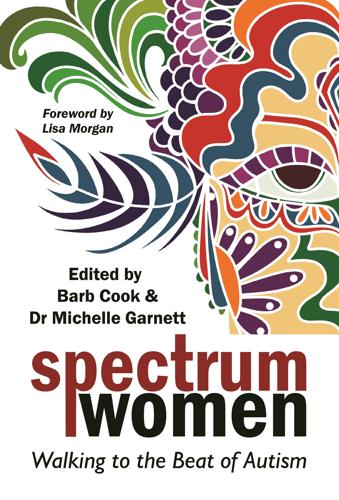
Spectrum Women: Walking to the Beat of Autism
by
Barb Cook
and
Samantha Craft
Published 20 Aug 2018
In my clinical experience I have found spectrum girls and women have the smartest coping mechanisms for their social communication difficulties. These mechanisms include using observation, research, and imitation to be able to emulate neurotypical social communication. A helpful analogy is learning a new language. If one moves to Japan where most people speak Japanese, but one insists on speaking English, there are going to be communication problems. To navigate a largely neurotypical community, it makes sense to learn the communication system of that community. It is effortful to do so. Girls and women become exhausted by the intellectual effort, not only of learning the system, but the need to use it on a daily basis.
…
Sometimes, my mind gets overwhelmed with so much information that I cannot function. This is the perpetual conundrum with being autistic and having issues with executive functioning and task inertia. Agony Autie (2017) put it brilliantly: You gotta remember I believed I was neurotypical all my life; I believed I was a failing neurotypical. All my life, I remember thinking, “Why can’t I do this? Why can’t I keep this together?” … You feel like it makes sense, but at the same time, you then have to reimagine your whole life again. I couldn’t have put it better myself. I was academically able, behaved myself, and permanently masked and camouflaged myself so I wasn’t seen as “the weird kid” when I had difficulties starting on a project, assignment, or research paper.
…
I could see clear signs of frustration in my managers’ faces when they said, “We know you can do this.” I know I can do it too! However, just because I can’t on one day doesn’t mean I’m completely incapable. Some days are better than others, and this rings true for all of us—neurodiverse and neurotypical alike. Because I’ve “worn the neurotypical mask” for so long and only since my diagnosis have I acquired the vocabulary to be able to explain why I’m having difficulties. I feel as if these are being interpreted as excuses rather than reasons, which makes me feel that I’m being gaslighted: you’re not autistic, you’re just lazy.

The Unwritten Rules of Social Relationships: Decoding Social Mysteries Through the Unique Perspectives of Autism
by
Temple Grandin
and
Sean Barron
Published 30 Sep 2012
We offer this book in the hope that people of both cultures—those with autism and neurotypicals alike—can gain a deeper awareness of and appreciation for the other. To do that, we can think of no better way than sharing with you how we think about social relationships—this is how we each gain perspective of the other. We could enumerate any number of unwritten social rules, offer hundreds of bulleted examples of social behaviors we had learned in a neat and organized manner, but they would have little lasting impression on neurotypical (NT) people until they first understood what it’s like to be “in our heads,” to hear the conversations we have with ourselves about the people and the situations we experience.
…
Isn’t that interesting? You know there’s got to be many AS students in that school. But the conclusion I’m drawing is that more than just AS students need social skills training—the neurotypical “techie” students do too. Interestingly, there is a link between autism and engineering. Research by Simon Baron-Cohen indicated that there were 2.5 times as many engineers in the family history of people with autism as in their neurotypical counterparts. It makes sense: the really social people are less likely to be interested in building bridges or designing power plants. Today, teaching manners and etiquette just isn’t the priority it used to be when I was growing up.
…
I still saw only the surface of social situations and drew conclusions that reflected absolutes rather than acknowledging the emotional complexities inherent in social relationships. Emotions are the back-seat drivers of how neurotypical people act in public settings. Even when boundaries of public versus private behaviors are clear, emotions can throw all of that logical thought into the wind. This is far more frequent with neurotypicals than it is for the rule-bound person with autism. However, we mention it to shed light on the difficulty it makes for people with ASD to learn public versus private words and actions. Temple explains: My father was a highly unpredictable man when it came to his emotions.
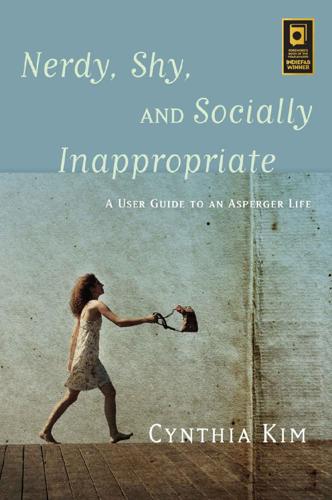
Nerdy, Shy, and Socially Inappropriate
by
Cynthia Kim
Published 20 Sep 2014
For years, Sang was certain he was communicating clearly with me but most of what he was saying wasn’t truly getting through. Often, neurotypical people communicate in subtle ways that autistic people find difficult to interpret. In particular, body language, facial expressions, and implied communication can be hard for people on the spectrum to interpret correctly. For example, I had no idea until recently that when someone walks into the kitchen and says, “Oh, those cookies smell delicious” they’re hinting that they would like me to offer them a cookie. My usual response of “thank you” followed by continuing to clean up the kitchen or change the subject is seen by most neurotypical people as cold and rude.
…
Even without understanding all of my autistic traits and what they meant to our relationship, we managed to develop quite a few accommodations over the years. Growing up in a household with an Aspie parent is going to be different, whether the parent has a diagnosis or not. For a neurotypical kid like Jess, it was probably confusing at times. In a way, she grew up in a bicultural household, and like many children from multicultural families, she learned to intuitively translate between autistic and neurotypical. There’s some question about how having a parent with Asperger’s affects a typical child. I definitely see ways in which my Aspie traits have influenced Jess’s behavior. She’s told me stories about how friends at college or colleagues at work have pointed out deficiencies in her social skills.
…
and communication see body language and non-verbal communication; social/communication skills and deficits and competencies 216–17 coping strategies see coping strategies/mechanisms diagnosis see diagnosis of Asperger’s Syndrome/ASD and emotion see emotions and empathy see empathy and executive function deficit see executive function (EF) and face blindness 43 gender differences 20, 3–21, 24 growing older on the spectrum 133–7 and insomnia 128–33 Kanner’s definition of autism 21 labeling see labeling motor development delay 118 and perfectionism 191–3 and perimenopause symptoms 134–5 and sensory sensitivities see sensory sensitivities strengths associated with 210–15 and thinking see thinking traits making autistic individuals vulnerable to bullying 29 and triggers 66–7 Baumeister, Roy 179 bliss 145 blogging 19–18, 230, 231 blunted affect 37–9 body, autistic 117–37 the autistic brain 69, 74, 141, 146, 9–168, 171 see also executive function (EF) and clumsiness 117–18 and growing older on the spectrum 133–7 and insomnia 128–33 and sensation see sensory seeking; sensory sensitivities; stimming and sports/exercise 57, 106, 119–28 body language and non-verbal communication 6–35, 46–37, 51 blunted affect 37–9 eye contact 39, 42–40, 44–5 facial expression see facial expression intentional employment of 39–41 non-verbal cues 39, 6–45, 51, 64, 65, 223 brains 69, 74, 107, 141, 146, 171 brain–body communication 168–9 executive function see executive function (EF) and inhibition 165 bullying 9–25, 223 calmness 214 catastrophizing 193–7 change, resistance to 86, 2–91, 166 checklists 178 chunking 177 clumsiness 117–18 cognitive empathy 81, 96, 154–7 cognitive flexibility 162, 166 communication see body language and non-verbal communication; language; social/communication skills and deficits compassion 231–2 competencies 216–17 compromise 66 confrontation skills deficit 41–140, 148 contentment 144–5 control 182–5 meltdowns and loss of see meltdowns coping strategies/mechanisms 29, 32, 9–86, 135, 189, 214, 218 and control 183–5 with executive function deficit 172–3 pattern recognition see pattern recognition rescue strategies for new parents 76–7 routines as 86, 94–89, 166 rules as 36, 86, 87–9 for sensory sensitivities 109–16 special interests 96–101 strengths as coping mechanisms 210–12 curiosity 211 decision making 158–61 dependability 214–15 depression 127 detachment 80, 198, 214 see also withdrawal/shutdown determination 141, 215 developmental disability 31–4 diagnosis of Asperger’s Syndrome/ASD and acceptance 228–32 and being understood 61–60, 71 and DSM-5 21 gender differences with diagnosis rates 2–21, 23 growing up undiagnosed 18–13, 34–20, 6–53, 59, 86, 147, 182, 192–3 and labeling see labeling late diagnosis 14, 21 resistance to change as a criterion for 91–2 and self-redefinition 208–27 self-understanding growing from 6–35, 61–60, 72, 182, 10–208, 225, 229–32 sharing your diagnosis with your child 82 Diagnostic and Statistical Manual of Mental Disorders (DSM-5) 21 disability, developmental 4–31, 209–10 discipline 214–15 domestic violence 223 driving 77 ego depletion 179–80 elation 144, 145 emotions 138–57 alexithymia 141–4 anger constellation 146–9 catastrophizing as an emotional magnet 196 discriminating the target of others’ expressions of 140–41 emotional detachment 80, 198, 214 and empathy see empathy expressing love and feelings 68, 69, 72, 74, 138 feeling overwhelmed by others’ emotions 141, 156 getting in touch with feelings 144–52 happiness constellation 144–6 identifying 9–138, 140, 141–3 meltdowns see meltdowns modulating the strength of 40–139, 141 sadness constellation 149–52 and sensations 142, 6–145, 149, 170 see also anxiety; panic; shame empathy 152–7 cognitive (perspective taking) 81, 96, 7–154, 210, 231 meaning of a lack of 157 Sally–Anne test 155 vs. sympathy 153–4 executive function (EF) 158–81 acting on a problem 168–73 and the anger constellation 146–7 attention 162, 164–5 conservation of EF, and ego depletion 179–81 decision making 158–61 inhibition 165, 178 initiating actions 165 monitoring actions 165–6 planning 93, 161, 163 problem solving see problem solving procrastination and EF fail 173–8 and stimming 180–81 and time agnosia 178–9 verbal reasoning 164 exercise see sports and exercise face blindness (prosopagnosia) 43 facial expression 36 blunted affect 37–9 eye contact 39, 42–40, 44–5 faking 39 frowning 16, 38 reading 42–4 family responsibilities household see household management parenting see parenting fear 18, 26, 27, 105, 110, 204, 231 of abandonment 151 and catastrophizing 196 irrationality of 221, 223 of not being good enough 147 see also anxiety feeling see emotions; sensory sensitivities fight or flight response 45 food sensitivities 13–112, 115 Frost Multidimensional Perfectionism Scale 192 frowning 16, 38 frustration 146 functioning labels 215–18 see also labeling games 23–4 gender differences with ASD in diagnosis 20, 21–3 in play 24 generalizing 63, 210, 212 giftedness 30–33 grief 150–51 guilt 75 handholding 64 happiness 144–6 headbanging 75, 103, 106, 202, 203, 205 honesty 210–11 household management 61–2 and parenting 73–4 humiliation 147 hypersensitivity see sensory sensitivities hyposensitivity 170–73 indignation 147–8 infodumping 95–6 inhibition 165, 178 insomnia 128–33 intelligence 21, 2–31, 33, 51–50, 71 interests relationships and common interests 56–7 special 77, 96–101 interoceptive feedback 170 irritability 147 joy 145 joys of parenting a toddler 77–9 Kanner, Leo 21 Kim, Jess 2–71, 75, 8–77, 79–85 Kim, Sang Hwan 56, 57, 58, 62–59, 64, 6–65, 67, 70–68, 71, 75, 3–82, 85, 92, 6–135, 41–140, 148, 183, 188, 189, 200, 224 labeling 32–30, 208–27 finding the right labels 209–15 functioning labels in practice 215–18 and self-redefinition 208–27 and the wish for normality 225–6 language body language see body language and non-verbal communication glitches 135–6 literal interpretation 27, 67–8 social use of (pragmatics) 45–52 verbal cues 49, 67 verbal processing 47–51 light sensitivities 110–11 Linden, Fabian 227 literal interpretation 27, 67–8 love compassion 231–2 expressing love 68, 69, 72, 74 and parenting 72, 74 and sex see sex life loyalty 211 marriage 70–59, 75, 188–9 see also parenting; sex life martial arts 57, 106, 121–7 melatonin 132–3 meltdowns 54, 60, 67, 75, 110, 116, 124, 171, 200–207 anatomy of a meltdown 201–5 helping someone through a meltdown 207 nightmares as forms of meltdown 148 triggers 205–6 see also headbanging memory problems 136–7 working memory 164 see also reminders menopause/perimenopause 133, 134–5 metaphors 27 mindfulness 176 mindful physical activity 127 missing word problem 135–6 monologuing 95 motor coordination 18–117, 134 motor development delay 118 music 76 neurotypical people/behaviour acting on a problem 168 Aspie parenting of see parenting emotional interaction 140 expressing love 68, 69, 70 filtering sensory data 170–71 marriage to an Aspie partner 70–59, 75, 188 the neurotypical brain 69 and special interests 99 subtle communication ways 67 nightmares 148 NO reflex 92–4 non-verbal communication see body language and non-verbal communication nonjudgmentalism 210 optimism 211–12 panic 159, 185, 204 and the NO reflex 93, 94 see also meltdowns parenting 54, 71–85 and the child’s venture into the world 79–82 expressing love 72, 74 infancy and motherhood 74–7 joys of parenting a toddler 77–9 rescue strategies for new parents 76–7 and retreat 75, 83 routines 78 sharing your ASD diagnosis with your child 82 support 75, 82–3 teenagers and the approach to adulthood 82–5 unconventional 72–4 pattern recognition 27, 33, 34, 36, 86, 87, 88, 214 peace 145 peer pressure 81 perfectionism 26, 189–93 perimenopause 133, 134–5 perseveration 95–6 perspective taking 81, 96, 7–154, 210, 231 Sally–Anne test 155 see also empathy pets 76 phones, communication problems with 48–9 physical activity see sports and exercise planning 93, 161, 163 aids 178 strategies 176–7 play 4–23, 31 and parenting 78–9 pragmatics 46–52 prioritizing 172, 177 problem solving 4–163, 210, 211 acting on a problem 168–73 and executive function impairment 175–8 procrastinating in 173–5 procrastination 173–5 prosopagnosia (face blindness) 43 rage 148 relationships 53–70 alexithymia and 142–3 apologizing 62 balancing adaptation and acceptance 69–70 and common interests 56–7 and compromise 66 and empathy see empathy expressing love 68, 69, 72, 74 see also sex life intimate 4–63, 114–15 see also sex life making friends 7–56, 79–80 marriage 70–59, 75, 188–9 see also sex life and the need for withdrawal 65–6 not being understood 59–60 parent–child see parenting shrinking–growing cycle 56–9 spontaneous affection 64 unintentional hurtfulness 60–59, 62–3 reminders 74, 167, 177, 180 software/apps 176–7 resentment 148 resistance to change 86, 2–91, 166 and the NO reflex 92–4 rigidity 86–96 rigid thinking 7–146, 166 see also perseveration; resistance to change; routines; rules rocking chairs 76 Rogers, K., Dziobek, I. et al. 156–7 routines appropriateness of 91 as coping strategies 86, 94–89, 166 and the NO reflex 92–4 and parenting 74, 78 and problem solving 176 and resistance to change 86, 2–91, 166 and spontaneity 91, 92 rules as coping strategies 36, 86, 87–9 learning social rules 27, 33–4 and spontaneity 89 sadness 149–52 Sally–Anne test 155 self-care 187–8 self-control 182–5 sensory filtering 170–71 sensory regulation/stimming 4–102, 9–108, 81–180, 230 sensory seeking 9–104, 124, 126 sensory sensitivities 63, 109–16 and the anger constellation 146–7 emotions and sensations 142, 6–145, 149, 170 hyposensitivity 170–73 impact on intimacy 63, 114–15 interoceptive feedback 170 to light 110–11 and parenting 73, 74 sensory overload 63, 74, 110, 116, 127 to smell 112–13 to sound 111–12 to taste 112–13 to touch 63, 64, 113–15 sex life and “bliss” 145 and sensory sensitivities 63, 114–15 sexual abuse 223 shame 75, 147, 182, 183, 185–9 shutdown see withdrawal/shutdown shyness 14, 23, 27 sincerity 211 singing 76 sleep problems 128–33 nightmares 148 smell sensitivities 112–13 social/communication skills and deficits 35–52 and aphasia 135–6 apologizing 62 blunted affect 37–9 body language see body language and non-verbal communication; facial expression of a child with an Aspie parent 84–5 compensating for a partner’s deficits 65, 75, 85 confrontation skills deficit 41–140, 148 coping strategies in social interaction see coping strategies/mechanisms eye contact 39, 42–40, 44–5 generalizing 63, 210, 212 learning social rules 27, 33–4 need for explicit communication 67–8 neurotypical subtlety in communication 67 non-verbal communication see body language and non-verbal communication; facial expression not being understood 59–60 and parenting 73 perseverance with communication 67–8 pragmatic impairments 46–52 and relationships see relationships scaring others 36–41 and social anxiety 220–25 social use of language 45–52 telephone communication problems 48–9 unintentional hurtfulness 60–59, 62–3 verbal cues 49, 67 verbal reasoning 164 see also language social power balance 45 social scripts 86, 88, 167, 180 sound sensitivities 111–12 special interests 77, 96–101 spontaneity and rules/routines 89, 91, 92 spontaneous affection 64 sports and exercise 57, 106, 28–119, 134 mindful physical activity 127 and sensory seeking 124, 126 and sleep 130 stimming 4–102, 9–108, 81–180, 230 stress response fight or flight 45 triggers 66–7 sympathy 153–4 tactile sensitivities/defensiveness 63, 64, 113–15 taste sensitivities 112–13 telephone communication problems 48–9 thinking in absolutes 193–7 catastrophizing 193–7 flexible 162, 166 generalizing 63, 210, 212 perspective taking 81, 96, 7–154, 210, 231 rigid 7–146, 166 verbal reasoning 164 time agnosia 178–9 touch 63, 64 tactile sensitivities/defensiveness 63, 64, 113–15 triggers of meltdown 205–6 of smell and taste sensitivities 112 of stress response 66–7 of withdrawal 199 values 211 verbal processing 47–51 verbal reasoning 164 walking 77 water 76 Willey, Liane Holliday 64 withdrawal/shutdown 60, 67, 110, 116, 197–200 common signs of 198 helping someone through 207 need for withdrawal in a relationship 65–6 parenting and retreat 75, 83 and resurfacing 200 wonder 145 working memory 164 Zen 208 Also available Pretending to be Normal Living with Asperger’s Syndrome (Autism Spectrum Disorder) Liane Holliday Willey Foreword by Tony Attwood ISBN 978 1 84905 755 4 eISBN 978 1 84642 498 4 Compelling and witty, Liane Holliday Willey’s account of growing to adulthood as an undiagnosed ‘Aspie’ has been read by thousands of people on and off the autism spectrum since it was first published in 1999.
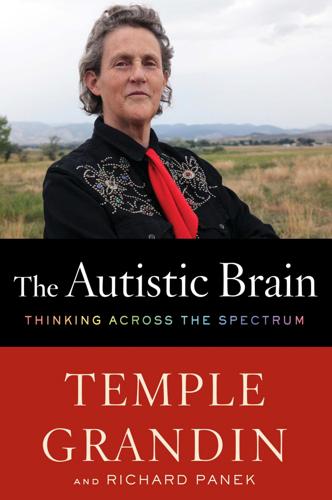
The Autistic Brain: Thinking Across the Spectrum
by
Temple Grandin
and
Richard Panek
Published 15 Feb 2013
A 2011 fMRI study in the Journal of Autism and Developmental Disorders found that the brains in a sample of high-functioning autistics and typically developing individuals seemed to respond to eye contact in opposite fashions. In the neurotypical brain, the right temporoparietal junction (TPJ) was active to direct gaze, while in the autistic subject, the TPJ was active to averted gaze. Researchers think that the TPJ is associated with social tasks that include judgments of others’ mental states. The study found the opposite pattern in the left dorsolateral prefrontal cortex: in neurotypicals, activation to averted gaze; in autistics, activation to direct gaze. So it’s not that autistics don’t respond to eye contact, it’s that their response is the opposite of neurotypicals’. “Sensitivity to gaze in dlPFC demonstrates that direct gaze does elicit a specific neural response in participants with autism,” the study said.
…
The problem, however, is “that this response may be similar to processing of averted gaze in typically developing participants.” What a neurotypical person feels when someone won’t make eye contact might be what a person with autism feels when someone does make eye contact. And vice versa: What a neurotypical feels when someone does make eye contact might be what an autistic feels when someone doesn’t make eye contact. For a person with autism who is trying to navigate a social situation, welcoming cues from a neurotypical might be interpreted as aversive cues. Up is down, and down is up. Overconnectivity and underconnectivity.
…
On a computer screen, biological motion is nothing more than dots moving, but the dots are arrayed in such a way that they suggest an action a living person or animal would perform, like running. Studies have repeatedly shown that people with autism can identify biological motion, but they don’t do so with the same ease as neurotypicals. Nor do they attach emotions and feelings to the motions. What’s more, they use different parts of the brain than neurotypicals do. Neurotypicals show a lot of activation in both hemispheres, while autistics show less activation overall. The way the autistic brain engages with biological motion is reminiscent of Tito’s description of focusing on a door at the expense of seeing the room, or a description by Donna Williams I once read, of her being entranced by individual motes of dust.
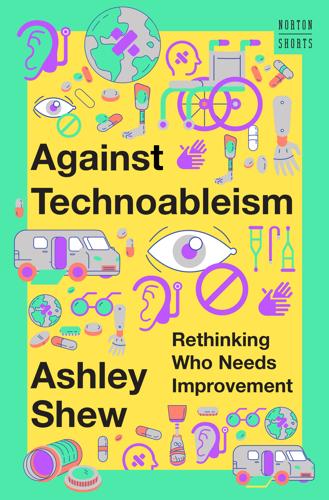
Against Technoableism: Rethinking Who Needs Improvement
by
Ashley Shew
Published 18 Sep 2023
As professor Nick Walker has described it, the idea that “there is one ‘normal’ or ‘healthy’ type of brain or mind, or one ‘right’ style of neurocognitive functioning, is a culturally constructed fiction, no more valid (and no more conducive to a healthy society or to the overall well-being of humanity) than the idea that there is one ‘normal’ or ‘right’ ethnicity, gender, or culture.”19 Its sibling term, neurodivergent, was coined by Kassianne Asasumasu in the 1990s to describe a wide variety of diagnoses/brains/neurotypes, not only autistic ones; it is a more capacious category, intended to take a wider view on difference. The label neurodivergent includes psychiatric diagnoses, learning disabilities, brain injuries, ADHD, and cognitive disabilities of all sorts—any brain that doesn’t think in “conventional” or expected or “neurotypical” ways. In the early days of the Disability Alliance and Caucus, this language allowed us to think both about being neurodiverse (as in, our group contained many neurotypes) and about how each individual one of us was neurodivergent in different ways: neurodiversity is about the aggregate (an individual person cannot be diverse, only a group can be), and neurodivergence is about the individual with respect to an aggregate (people are divergent from some standard or norm).
…
But when autistics are forced to mask and process in the world in ways that make neurotypical people happier, when they are trained to ignore the things that feel good and natural to them, it takes a huge cognitive and emotional toll, especially over time. Autistic people point to consequences of this type of masking: autistic meltdowns (sometimes called tantrums, these are in fact a manifestation of overstimulation—emotional outpourings that help them re-regulate) and autistic burnout (absolute exhaustion and even catatonia that can last for days or years from having to constantly perform as neurotypical). These are some of the results of having your natural behaviors bulldozed in the quest for normality.
…
Bell (1927), 20 Çevik, Kerima, 104 Carter-Long, Lawrence, 27, 28 “Case for Conserving Disability” (Garland-Thomson), 52 Case for Disabled Astronauts, The (Wells-Jensen), 126 cerebral palsy, 91 chapter guide, 12–13 charity marketing campaigns, 36–37 Charles, Ray, 35 chattel slavery, 24 chemobrain, 11–12, 77, 78, 112 Chertock, Marlena, 126 “Choreography for One, Two, and Three Legs” (Sobchack), 138n15 citizenship, 18, 137n6 Claiming Crip (Hitselburger), 30 Clare, Eli, 124 climate change, 115–16, 117 “Clinically Significant Disturbance: On Theorists Who Theorize Theory of Mind” (Yergeau), 140n28 cochlear implants, 71–72 colonization effects, 24–25 concentration camps, 91 congenital amputees, 57 congenital disability, 89 Covid-19, 41, 52, 58, 115, 118, 138n13, 141n38 “crip,” 30 Crip Camp, 30 Crohn’s disease, 4 cross-disability community connections, 12, 77, 78–81, 85–86, 131 cultural technologies, 83, 107–8 Cyborg Jillian Weise, The, 2, 9–10 cyborgs (technologized disabled people), 55 Dancing with the Stars, 49, 60, 61, 63, 64 Deaf community, 71–72, 73 Deaf Gain, 73–74 Deaf Poets Society, The, 125–26 Decolonizing Mars Unconference, 117, 127–28 dehumanization, 88–89, 100, 101–2, 140n28 de Leve, Sam, 126, 130 “Descent” (Kinetic Light Project), 62–63 diabetes, 59, 138nn12–13 Diagnostic and Statistical Manual (DSM), 19, 102 disability conscious acts of empowerment, 28–30 economic categorization of, 24–25 historical framework of, 24–25, 26–27 pathologized approach vs. experiential/relational approach to, 85–86 political/relational contexts within, 88 as predictable human experience, 114–15 as social construct, 21 uncertainty and, 120–24 disability activism, 12, 79 campus accessibility campaigns, 138n7 celebrating disability embodiment and, 62–63 centering disabled people in disabled technology, 17, 110–11 charities garnering activist critique, 92 cross-community coalitions and, 79–80 disability rights, 44, 92, 105 disability rights movement, 27, 28, 31, 56, 92, 109 disability communities amputee community, 3, 12–13, 14–15, 26, 58, 59, 74–75 autistic community, 77, 79–80, 105–6, 112 claiming identity, 28–29 Deaf community, 71–72, 73 framing language of, 25–26, 30, 31 inclusion/diversity of, 22, 82, 115, 124 media generated tropes and, 40, 41–43 nondisabled experts harm to, 10–11, 19–20, 88 principles of justice, 125 representation and, 4, 56, 119 value of, 51, 56, 113, 122, 124, 125 See also neurodivergence disability culture, 107–8 disability experts, 2–3, 10–11, 17, 19–20, 50–51, 100, 123, 131 disability history, 24–25, 26–27, 31, 88–92 Disability History of the United States, A (Nielsen), 23 disability language, 11, 23, 25–26, 30, 31, 72 disability parking, 5–6, 38–39, 78 disability service professionals, 85–86, 95–96 disability and technology centering disabled as experts, 17, 110–11 cultural technologies, 83, 107–8 deterioration and usage, 60 disorientation and, 22–33, 44–45 historical Nazi Germany and, 89–92 insight for technological futures, 123–24, 128–30 media narratives and, 17, 32–33, 35, 50–51, 59, 60–61 medical model of disability and, 71 technoableism, defined, 7–8, 9, 130 technofuturists and, 114, 118–19 technological solutionism and, 4, 8, 9–10, 32, 51–53, 71–72, 74 See also accessible environments Disability Visibility Project, 114 disability welfare, 34, 38 disabled, etymology, 27–28 disabled ecologies, 116 Disposable Humanity (Snyder and Mitchell), 92 Divas with Disabilities Project, 56 Down syndrome, 91 Down Syndrome Uprising, 94 drapetomania, 25 DSM (Diagnostic and Statistical Manual), 19, 102 Dungeons & Dragons, 80, 107, 109 Ehlers-Danlos Syndrome (EDS), 85 emotional regulation, 97 enhancement technologies, 51 environmental health hazards, 116–17 environmental racism, 115–16 eugenics history, 89–92 euthanasia, 91 Evans, Dom, 35 exoskeletons, 8, 22, 50, 55 eye contact, 83, 84, 86, 99, 103 Fakorede, Foluso, 58 fatphobia, 17 feel-good narratives, 53–54 Feminine Boy Project, 102 Film-Dis, 35 flappy hands, 96–97 Forber-Pratt, Anjali, 28 forced sterilization, 88, 91 Funk, Cynthia, 56 Fuselier, Annabelle, 112 Gallaudet Eleven, 127, 130 Gardiner, Finn, 97, 106–9 Garland-Thomson, Rosemarie, 28, 52, 68 gay conversion therapy, 102, 103 gender dysphoria, 102 handicapped, 26–27 Hawking, Stephen, 128 Hearing Happiness (Virdi), 71, 73 Heidinger, Willi, 90 Herr, Hugh, 51, 53, 56, 67 Hershey, Laura, 124 Hitler, Adolf, 89, 90 Hitselburger, Karin, 30 Holocaust, 89 Hough, Derek, 61 “I Am Autism” (Wright), 92–93 IDEA (Individuals with Disability Education Act), 26 identity-first language, 25–26 Indian Residential Schools, 24 Indigenous peoples, 23, 24, 25 Individuals with Disability Education Act (IDEA), 26 inspirational-overcomers trope, 41–44, 46–47, 49, 54–55, 60–64, 71–72 inspiration porn, 41–44 institutionalization, 88 intellectual disabilities, 29, 95 Invitation to Dance (Linton), 62, 138n10 James, William, 139n16 Jerry’s Kids, 37 Johnson, Cyrée Jarelle, 124 Johnson, Harriet McBryde, 31, 37 Jones, Keith, 30 Judge Rotenberg Center (JRC), 104–5 Kennedy, John F., 139n23 Kennedy, Rosemary, 139n23 Krip Hop Nation, 30 Lamm, Nomy, 124 Law, Ashtyn, 35 Left Hand of Darkness, The (LeGuin), 120–21 leg amputees, 16, 49, 64–67, 69–70 LeGuin, Ursula K., 120, 121 Leib-Neri, Marisa, 23–24 Lewis, Jerry, 37 Lewis, Talila A., 9 Linton, Simi, 27, 62, 138n10 Little People of America, 94 Long Covid, 41, 52, 115, 118 Lovaas, Ivar, 100–102 Lumumba-Kasongo, Enongo 128 Lyme disease, 119 MacIntyre, Alasdair, 119 Magic Wand, The (Manning), 34 Manning, Lynn, 34–35 McCollins, André, 104–5 McCollins, Cheryl, 104 McLain, Elizabeth, 106–7, 111–12 McLeod, Lateef, 124 media narratives, 17, 32–33, 35, 50–51, 59, 60–61 See also tropes medical experimentation, 91 medical model of disability, 20–21, 31, 71, 139n22 mental illness, 25, 88, 102, 130 Meyer, Bertolt, 55 Milbern, Stacey, 124 Mitchell, David, 92 mobility equipment, 17, 22, 48, 55, 69, 131, 137n5 moochers-and-fakers trope, 38–39, 88–89 Moore, Leroy Jr., 30, 124 movement choices, 16, 62–63 Muscular Dystrophy Association telethons, 37, 92 Nario-Redmond, Michelle, 137n3 National Council on Independent Living, 94 National Institutes of Mental Health, 102 Native American cultures, 23, 24, 25 Nazi Germany, 89–92 Nelson, Mallory Kay, 14, 16, 137n5 neurodivergence addressing social structures, 86–87, 88 applied behavioral analysis and, 95–101, 103–5 Autism Speaks and, 37, 92–93, 94, 95 autistic community and, 77, 79–80, 105–6, 112 autistic scholars panel, 106–12 cross-disability community connections, 12, 77, 78–81, 85–86, 131 cultural technologies and, 83, 107–8 dehumanization and, 88–89, 100, 101–2, 140n28 disability service professionals and, 85–86, 95–96 historical Nazi Germany, 89–92 language of, 84–85 neurodiversity and, 12, 13, 80, 81, 82, 84 neuroqueer, 102 neurotypical and, 81–82, 83 stimming and, 96–97 See also autism spectrum disorder; disability communities neurodiversity, 12, 13, 80, 81, 82, 84 neurodiversity movement, 13, 82 neurodiversity paradigm. See neurodiversity neuroqueer, 102 neurotypical, 81–82, 83 Nielsen, Kim, 23 normative behavior patterns, 110 Not Dead Yet, 94 “nothing about us without us,” 109 Nović, Sara, 71, 72 Ollibean (Sequenzia), 98 Onaiwu, Morénike Giwa, 19 overstimulation, 104 Paralympics, 13 Parastronauts, 128 Patient No More, 31 Pavlov, Ivan Petrovich, 100, 140n29 Peace, Bill, 30, 40, 51, 54, 70 person-first language, 25–26 Peters, Gabrielle, 7 Piepzna-Samarasinha, Leah Lakshmi, 114, 120, 124 Pistorius, Oscar, 49 pitiable-freaks trope, 36–37, 88–89 Plains Indian Sign Language, 23 “Poet with a Cattle Prod” (Lovaas), 102–3 Pokémon, 11, 107, 108 pollution, 115–16 post traumatic stress disorder (PTSD), 3, 11, 97, 99 Postural Orthostatic Tachycardia Syndrome (POTS), 85, 118 post-viral syndromes, 52, 118, 141n38 POTS (Postural Orthostatic Tachycardia Syndrome), 85, 118 Presser, Lizzie, 58 Price, Margaret, 85 professional/expert treatments, 2–3, 10–11, 17, 19–20, 50–51, 100, 123, 131 Project Unicorn, 69 prostheses advanced technology and, 46–47, 49, 50, 68 arms and hands, 67–69 costs of, 16, 66–67 deterioration and usage, 60, 63–64, 139n16 disabled experience vs. media narratives, 53–55, 60, 61, 63 legs and, 64–67 maintenance and, 72, 75–76 personalized requirements of, 15–16 sexual abuse and, 16 technology choices and, 16–17, 69–70 as tools, 14–15, 54 “Prosthetics Do Not Change Everything” (Reeves), 68–69 PTSD (post traumatic stress disorder), 3, 11, 97, 99 Pulrang, Andrew, 30 Purdy, Amy, 49, 61 Quiet Hands (Bascom), 96 racism, 17, 18, 25 Radford Army Ammunition Plant (RAAP), 117 radical empiricism, 139n16 Real Experts, The (Sutton), 19, 106 Reeves, Jen Lee, 8, 68, 139n17 Reeves, Jordan, 8, 139n17 refrigerator mother theory, 41 Rehabilitation Act (1973), 27 rollator, 48, 76 Samuels, Ellen, 85 saneism, 17 Satterwhite, Emily, 117, 141–42n43 #SayTheWord campaign, 28, 29 Schalk, Sami, 42, 43, 85 scientific racism, 17 sensory regulation, 97 Sequenzia, Amy, 98 “Seven Traits for the Future” (MacIntyre), 119–20, 141n39 sexism, 17 sexual abuse, 16 shameful sinners trope, 40–41 Sheppard, Alice, 62 Shivers, Carolyn, 106, 109–10 Singer, Judy, 81 Sins Invalid, 124, 125 Sledge, Heath, 139n16 Snyder, Sharon, 92 Sobchack, Vivian, 138n15 social model of disability addressing social structures, 86–87, 88 disability from societal stigmas/barriers, 22–23 environmental design and, 119–20 vs. medical model of disability, 31, 139n22 neurodiversity/neurodivergence and, 82, 84–85, 139n21 technological solutions and, 71–72 social scripting exercises, 110 Society for Disability Studies, 62 space travel disabling effects, 118–19, 142n50 Spanish Flu (1918), 52 Sparrow, Maxfield, 98–99 spectrum disorder.

Asperger Syndrome: A Love Story
by
Sarah Hendrickx
and
Keith Newton
Published 14 Jun 2007
If, added to this, you have a small or non-existent peer group, it can be impossible to establish if your desires, feelings and practices are ‘normal’ or even acceptable, because there is no one to share with or ask. Given that some people with AS are intensely private and do not share information willingly, this can exacerbate the difficulty. Someone with AS may wonder: How do I know if others with AS experience the same discomforts or pleasures? If I cannot compare myself to the neuro-typical (NT) population, which I do not feel an affinity to, how do I know if I am the only one who feels this way? How do I find a partner if I have no one to ask how to do it? Do others feel the same anxiety, fear and loneliness? Do others feel joy and contentment in their own company? What are the motivations behind relationship choices and sexual behaviour?
…
The whole business of sexuality and interpersonal relations is confusing and fraught with complex and subtle intentions that require decoding (Hénault 2006). 15 16 / Love, Sex and Long-Term Relationships This chapter will focus on how people are finding and choosing potential partners, and it will include comments about how their experiences have affected them. Where to look An initial difficulty may be that someone with AS has a more limited social network than a neuro-typical (NT) person. Some people with AS have no one whom they could describe as a ‘friend’ and, given that any social opportunity is a possible chance of meeting someone, the fewer the social contacts, the fewer the invitations and the fewer the possibilities of finding a partner. We live in a social world full of signs and signals, and assumptions that everyone understands all these.
…
This is an ability that develops in small children who, as they grow, begin to realise that they are not the only people in the world, and that others have different thoughts and knowledge from their own. Many adults with AS can find it very difficult to anticipate and comprehend that a partner may have different emotional needs. Many AS people express bewilderment at the emotional reactions of their neuro-typical (NT) partners. They may 31 32 / Love, Sex and Long-Term Relationships choose to do nothing in response to emotional outbursts rather than risk doing the wrong thing and unwittingly upsetting their partner further. Often the ‘doing nothing’ is exactly what makes things worse because this can be perceived as uncaring and cold to an NT partner.
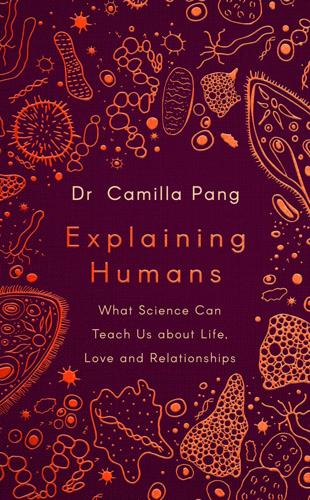
Explaining Humans: What Science Can Teach Us About Life, Love and Relationships
by
Camilla Pang
Published 12 Mar 2020
Being embarrassed in public is one of the great human fears. I didn’t always know this, but I do now. Saying or doing the wrong thing is something that both neurotypical and neurodiverse people are evidently capable of, but we probably get there via slightly different means. For someone like me, it’s usually through a lack of understanding about social norms and failing to take into account the invisible parameters of hierarchy and convention. If you’re neurotypical, you might have suffered the opposite problem: assuming that your knowledge of a certain situation was enough to ‘get it right’, or overreaching because you felt too comfortable and made a bad joke, or inappropriate suggestion.
…
By understanding scientific principles, we can better understand our lives as they really are: the source of our fears, the basis of our relationships, the functioning of our memory, the cause of our disagreements, the instability of our feelings and the extent of our independence. Science has been the key to unlocking a world whose door was otherwise closed to me. And I believe the lessons it has to teach are important for all of us, whether neurotypical or neurodivergent. If we want to understand people better, then we actually need to know how people work: the functioning of the body and the natural world. The biology and physical chemistry that most of us have only glimpsed as diagrams in a textbook actually contain personalities, hierarchies and communications structures all of their own – reflecting those we experience in everyday life, and helping to explain them.
…
Because of all the privileges I have had in life, I want to share my experiences of what is possible, and what can be achieved from a starting point of difference. With my Asperger’s syndrome, often referred to as a high-functioning form of autism that makes you too ‘normal’ to be stereotypically autistic, and too weird to be neurotypically normal, I see myself as an interpreter between both worlds in which I have lived. I also know that what changed my life was being aware that I was seen and understood. Realizing that I was a person, and had the right to be myself: in fact the duty to be. Everyone has the right to human connection – to be heard and taken seriously.

Visual Thinking: The Hidden Gifts of People Who Think in Pictures, Patterns, and Abstractions
by
Temple Grandin, Ph.d.
Published 11 Oct 2022
I get lost when verbal information is presented too fast. Imagine how a student who is a visual thinker feels in a classroom where a teacher is talking fast to get through a lesson. The New Normal These days, “neurotypical” has replaced the term “normal.” Neurotypicals are generally described as people whose development happens in predictable ways at predictable times. It’s a term that I shy away from, because defining what is neurotypical is as unhelpful as asking the average size of a dog. What’s typical: a Chihuahua or a Great Dane? When does a little geeky or nerdy become autistic? When does distractable become ADHD, or when does a little moody become bipolar?
…
Neurologist and author Oliver Sacks picked up on this propensity of mine to gather information and wrote about it in a New Yorker article that then became the title of his book An Anthropologist on Mars. It was an accurate description of how I make sense of the world. I’m like Margaret Mead among so-called normal, or “neurotypical,” people. In lieu of certain kinds of social connection, I’m more comfortable studying the ways and habits of people. “Fitting in” is a complicated business. I didn’t realize it then, but in searching for fellow visual thinkers through my survey, I was also searching for my tribe. I started my survey by asking people to describe their home or their pet.
…
Using what is known as the Children’s Embedded Figures Test, the researchers administered four separate cognition and intelligence evaluations to thirty autistic children with low verbal skills and an age-matched control group. While none of the autistic kids were able to complete the standard intelligence test (Wechsler Intelligence Scale), twenty-six completed the Embedded Figures Test, and they finished it faster than matched neurotypicals. Laurent Mottron, in a Nature article, reports that autistic people display more activity in the visual-processing network than the speech-processing network of the brain. He writes, “This redistribution of brain function may nonetheless be associated with superior performance.” The challenge is in how to offer a more effective assessment and education to visual-object thinkers.

The Asperger Love Guide: A Practical Guide for Adults With Asperger's Syndrome to Seeking, Establishing and Maintaining Successful Relationships
by
Genevieve Edmonds
and
Dean Worton
Published 15 Dec 2005
This is in contrast with the wealth of literature available for neurotypical people – just one of a multitude of examples of how poorly recognized, understood, and supported the needs of people with AS are. It is the duty of a just society to ensure that with the passage of time these needs are met, and from the perspective of people with AS and their families, the sooner the better. With written accounts by people with AS becoming more widely published the platform upon which to build better and more appropriate support services will grow stronger. It is then down to the neurotypical population to learn from the growing literature, and to use that platform to provide that support as and when it is needed.
…
This refers to an able, high functioning adult with Asperger’s syndrome, however, the book can be used for lower functioning adults on the autistic spectrum with support from a support worker, carer or trusted friend. NTs – a term used for the purposes of writing referring to mainstream neurologically ‘normal’ (neurotypical) individuals. AS – Asperger’s syndrome. Partner – a general term used for the purpose of writing for boyfriend, girlfriend or mate and to avoid cultural, sexuality, racial, regional, gender and related differences. ASD – Autistic Spectrum Disorder. Stims – self-stimulatory behaviour: repetitive motor or vocal mannerisms engaged in by people with ASDs.
…
I suppose with no experience of either situation, then I cannot say for sure and of course, everyone is different, AS or not. My general thoughts are that I feel a relationship with an understanding person, without AS, would be preferable. When I’m functioning well, I am able to socialize comfortably with neurotypical friends and acquaintances and I imagine that having a partner who is slightly more outgoing than me could be beneficial for me. 70 Until I became a university student, I attended an all-boys school between the ages of 12 and 18. Before 12, I wasn’t really mature enough to understand the concept of love and relationships, however, since coming to university this issue has led me into a lot of depression.
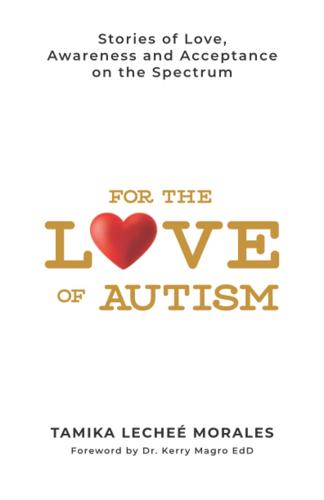
For the Love of Autism: Stories of Love, Awareness and Acceptance on the Spectrum
by
Tamika Lechee Morales
Published 23 Apr 2022
While a few friends will come to you and give you a hug, ask you how your child is doing, how school is, or offer to have a coffee, many may not know what’s happening or how to react. Now, my son is a teenager, and he has different interests and needs: music, friends, outings, parties. He has never been invited to neurotypical party. He does not know what that is. Instead, we would invite “regular kids” (neurotypical ones) to our house. We have been blessed that Jose Maria has a few friends who understand his difference but challenge him. These friends focus on strong conversation, redirect Jose Maria so he is present, paying attention, understanding what he understands, and sharing what he wants to share.
…
Legend loves the spotlight and a video camera. He has been begging for his own YouTube channel, so I love to turn the camera on him and have him improv. He has great presence and is truly a natural. It’s fun to watch him and I can’t help but feel amused every time. I also look at it as him practicing public speaking skills, which even neurotypicals are fearful of doing. One year, we sponsored an Autism’s Got Talent and Resource Fair through The Autism Hero Project, and I wanted to do a mommy-and-son dance to Kelly Clarkson’s song, “Broken and Beautiful.” We only practiced a few times because I was so consumed with all of the details and organization of the event itself.
…
Had Mustafa become just another statistic for their records? Unfortunately, no systems were in place to guide and support us. We were left grieving the “typical” child we thought we had lost. Needless to say, I didn’t know where to begin. At the time, I was a preschool teacher and had studied early childhood development, so I understood how neurotypical children developed. However, I didn’t know how to work with children with special needs. KNOWLEDGE IS THE MOST POWERFUL TOOL I knew I had to do something, so I searched for therapies. He isn’t speaking, so he must need speech therapy, I thought. We contacted a clinic and once a week I would sit in their office after work until 8:30 p.m. so that Mustafa could take part in speech therapy, occupational therapy, and physical therapy.
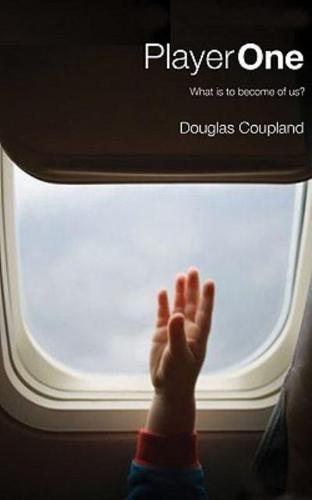
Player One
by
Douglas Coupland
Published 30 Jun 2011
Rachel has never fit into the world. She remembers as a child being handed large wooden numbers covered in sandpaper to help her learn numbers and mathematics. Other children weren’t given tactile sandpaper number blocks, but she was, and she knows that she has always been a barely tolerated sore point among her neurotypical classmates. Rachel also remembers many times starving herself for days because the food that arrived at the table was the wrong temperature or colour, or was placed on the plate incorrectly: it just wasn’t right. And she remembers discovering single-player video games and for the first time in her life seeing a two-dimensional, non-judgemental, crisply defined realm in which she could be free from off-temperature food and sick colour schemes and bullies.
…
It’s much easier to determine a woman’s age, as nature is far more generous in offering visual prompts in that department. Seated at the bar was another man — early thirties? He appeared well-nourished, and Rachel tried to determine whether he was handsome. “Handsome” is the male equivalent of beautiful, and to neurotypicals handsomeness indicates good breeding stock. Having studied copies of InStyle magazine for years, trying to understand the language of looks, Rachel remained unable to calibrate any rules of attractiveness. On the other hand, the man at the bar, who had had two drinks since he had arrived, kept two large rolls of money in his jacket pocket.
…
But now he believes that time has floods, too — it simply isn’t a constant anymore. Twenty thousand dollars in his pockets, and Luke feels like he’s in the flood. Luke asks, “What about you? Single?” “Yes. Irregularities in the insula, cingulate, and inferior frontal parts of the brain make me unable to have what neurotypical people such as you call a ‘relationship.’ I enjoy situations that are familiar to me, and if that means having a person around me, then I suppose that’s fine. But it’s not something I crave or seek. I also have 630 people following my ongoing blog on the subject of mouse breeding. One might consider them, if not partners, then friends.

Neurodiversity at Work: Drive Innovation, Performance and Productivity With a Neurodiverse Workforce
by
Amanda Kirby
and
Theo Smith
Published 2 Aug 2021
This is defined as one whose neurological development and state are atypical or diverge from the dominant neurological, cognitive and behavioural norms. The term has been thought to have been generated by the neurodiversity movement and initially focused far more on autistic people. It was seen as the opposite to ‘neurotypical’. However, using the term in this way may cause challenges of ‘otherness’ and sets people up as being either neurotypical OR neurodivergent, ie either sitting in one camp or another, when in reality people are far more complex and nuanced and cognition is far more than representing just one domain. The term divergence is also defined as separating, changing into something different, or having a difference of opinion.
…
Personality assessments can also provide useful information, but they aren’t nearly as powerful as other tools and often have the problem of being developed on a neurotypical population. There is a challenge also that taking grades and years of education as a metric for skills can exclude those whose education may have been a bit bumpy. In reality, combining multiple selection methods can help provide a comprehensive picture of candidates’ ability to perform well in the position you’re hiring for. There is some evidence of the challenges of using some assessments that have not been validated on a wider population, including those who are neurodivergent.5 Hiring diverse talent If using psychometric assessments is the norm for neurotypical people, is this the right thing if you actually want to attract a neurodiverse talent pool?
…
So neurodiversity is… the beautiful reality that all our brains are unique and we should start to celebrate and embrace that fact more often, and not allow language or labels to determine what’s normal and what’s not! Amanda’s normal is living in a very varied neurodivergent family – this is her neurotypical! In the end we want to have the tools and confidence to empower each of us to be our best selves. Warning: words have different meanings to different people at different times Human evolution, the distinction between us and our pets at home, is the fact we use language and words to communicate like no other being on this planet.
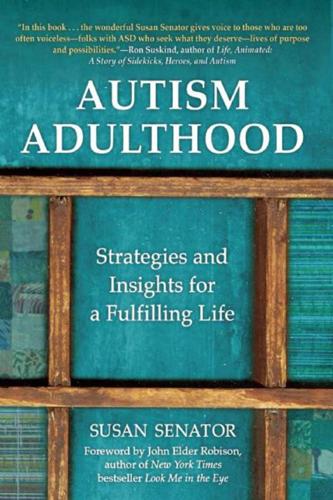
Autism Adulthood: Strategies and Insights for a Fulfilling Life
by
Susan Senator
Published 4 Apr 2016
Paul lent them his car wash, and in nine weeks over the summer, Tom recruited, trained, and employed fifteen young people with autism. They bought their first car wash a few months later, renovated it, and employed thirty-five guys with autism; they’ve been operating since then. Since opening, they have quadrupled their business, and they are profitable. Using supervisors who are neurotypical, Rising Tide manages to provide great job support for the employees with autism. Tom found that they did not need to give any special autism training to the supervisors; that the supports came naturally over time because the managers got to know their employees. Tom told me that he is, however, currently working on a “‘management guide’ for coaching and leading people with autism.
…
“I tell the clients ‘so-and-so is going to work with you, so you have to be a little more patient.’” Relationships, whether between a caregiver and a person who has a disability, or anyone else, are a two-way street. Perhaps this is the key to John’s great track record with Nat. As much as I hate to say it, too often we neurotypicals sometimes forget that our autistic loved ones are full-blown people, with all the quirks, irritations, emotions, flaws, hopes, and dreams that we have. Accordingly, John fully expects the individuals to do their part to form a successful relationship with the staff, to the extent they can. “Both the individuals and the staff have to be patient,” he said.
…
Therefore it is important to ask whether this autistic student actually needs this skill at this time. “We need to look at ways he can acquire skills that are of intrinsic value to him right now,” Peter says. In other words, we cannot take it for granted that autistic people will automatically value skills that neurotypical people value. Aim for the greatest efficiency of skill acquisition Another factor in teaching autistic people a particular skill is to consider how easy it is to put that skill in place. How much energy do you want to devote to this effort? Is there a natural context in which to learn this skill?
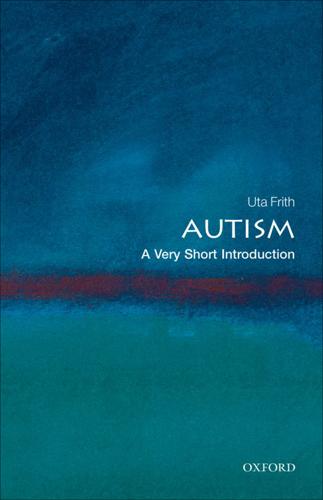
Autism: A Very Short Introduction
by
Uta Frith
Published 22 Oct 2008
Edward sticks out in a crowd, not only by his tall and lanky appearance, but also by his mannerisms and loud high-pitched voice. However, he has started to read books of manners and body language and is hoping they will improve his social skills. Edward is very knowledgeable about Asperger syndrome and avidly participates in Asperger discussion forums on the web. He knows that he is far more intelligent than most ‘neurotypicals’. However, there are signs that Edward is often anxious and sometimes depressed, and he is being seen by a psychiatrist who will carefully monitor him in the transition period when he leaves home to go to college. The three core features of the autism spectrum The examples of David, Gary, and Edward show how enormously varied the core signs of autism are, at least on the surface.
…
Is it indeed a form of autism and with the same genetic causes as autism? Or is it merely a personality type and not a disorder? There are now a number of people who have diagnosed themselves as having Asperger syndrome. These individuals often call themselves Aspies, and they feel different from NTs or neurotypicals. They do not need the attention of a clinician. They are perfectly adapted in their everyday lives, occupying a niche that is just right for their special interests and skills. It is not surprising that these people argue that Asperger syndrome is not a disorder. To them it is merely a difference, and a difference to be proud of.
…
Imagine if you were unable to do this. You would surely think the world of people complicated and unpredictable. Here is an extract from what an anonymous person with Asperger syndrome wrote: Something that most of us find difficult to remember is to whom we have said something and to whom not. Neurotypical people seem to be able to keep a mental file or record for every person they know with minute details, down to the fibs that have been said along with a mental note to keep them in mind. One of the most important things about the world of people is faces. And in faces it is the eyes that attract our attention.

The Behavioral Investor
by
Daniel Crosby
Published 15 Feb 2018
This is the line of thought pursued in a Stanford University study titled, ‘Investment Behavior and the Negative Side of Emotion’. Within, the researchers pitted 15 individuals with brain damage to their emotional processing centers against 15 “neurotypical” peers in a gambling task. The study found that the brain damaged participants handily outperformed their no-damage counterparts through a combination of being willing to take bigger bets and being able to bounce back quickly after setbacks. The neurotypical participants played more safely throughout but became particularly risk averse after periods of poor performance (which in markets tend to coincide with attractive periods of investment).
…
Incredibly, the choice supportive bias is such a powerful tendency that it seems to exist somewhere so deep within us that it is even present in those unable to form short-term memories. Dan Gilbert and his team examined the impact of the Free Choice Paradigm on a group of subjects with anterograde amnesia; in other words, a group of hospitalized individuals unable to form new memories. Like their neurotypical (that is, without brain damage) peers, the amnesiac patients were asked to rank the paintings from 1 to 6 and were given the option to keep either painting 3 or 4. Upon choosing a painting, the researchers promised to mail the chosen painting in a few days and left the room.30 Returning just 30 minutes later, the members of Dr.
…
To ensure that the amnesic patients were truly unable to form memories, the researchers then asked them to point to the painting that they had chosen before, a task at which the patients performed less well than chance guessing! The patients were then put through the whole ranking exercise again, with astonishing results. Just as with the neurotypical control group, the amnesic patients “talked up” the choice they made and dismissed the painting not chosen, even though they had no memory of having made a choice at all! Our need to view ourselves as competent and maintain ego lives somewhere so deep within us that not even cognitive impairment can touch it.
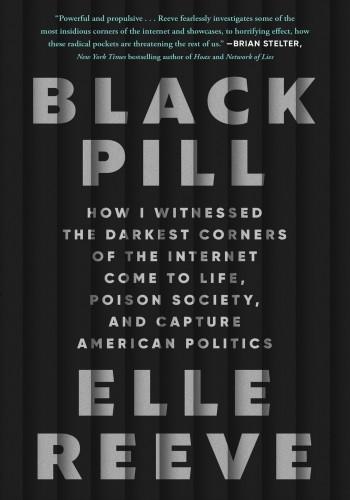
Black Pill: How I Witnessed the Darkest Corners of the Internet Come to Life, Poison Society, and Capture American Politics
by
Elle Reeve
Published 9 Jul 2024
From the very first days I started going on 4chan to figure out what the alt-right was, I noticed that a stunning number of posts on the website used the term “autist,” as in autistic, or someone with autism spectrum disorder. It was both a term of endearment and derision. To be “too autistic” to engage in some part of mainstream society could be either a badge of honor or a shameful confession. The products of obsessive and meticulous internet research were sometimes called “weaponized autism.” Neurotypical people with mainstream politics were called “normies.” I wasn’t sure what to make of it. I couldn’t find mainstream people talking about it anywhere, and when I told friends or colleagues about it, they seemed extremely skeptical. Early on in their friendship, Parrott understood that despite their shared autism, Heimbach could connect with people in a way that he couldn’t.
…
Three mental health professionals told me they had seen a wave of people seeking autism and attention deficit hyperactivity disorder diagnoses during the Covid-19 pandemic. Two of them said many of these people were actually depressed. It might be that a huge number of 4chan users really are measurably different from neurotypical people according to rigorous analysis based in science. Or it might be more like astrology, a way to talk about your personality and how you move through the world. Saying you’re a Gemini is shorthand for a fast-talking charmer who loves a good party. Saying you’re an autist could be shorthand for a misunderstood outsider who can never navigate the unspoken rules of the normal person world.
…
Parrott said that American society demanded he apologize for being white working class, and “I’m just stubbornly refusing to do it, and would rather ruin my life, objectively speaking, than go back to my vulnerable college self.” Heimbach said he would not make the big public apology he thought was required to reenter society, because it was a stupid “neurotypical” morality play. Only a couple weeks later, Heimbach was fired from McDonald’s after management discovered he’d been a professional racist. He read me his termination letter and said, “They never forgive you. They never forgive you…. There’s no expiration date for how long your life will be ruined.”

Drama Queen: One Autistic Woman and a Life of Unhelpful Labels
by
Sara Gibbs
Published 23 Jun 2021
Some autistic children never become adults. In rare and extreme cases, some are killed in their homes by the people who are supposed to love and care for them. A tiny percentage are killed in their schools by teachers attempting to restrain them. Autistic people are at significantly higher risk of dying by suicide than their neurotypical peers. There are many autistic people who, for a multitude of complicated reasons, are not able to tell their own stories and so have false narratives and limitations imposed upon them. I am also uncomfortable with the idea of this book being held up as an example of what autistic people can achieve without explaining first that the worth of autistic people should not be judged by their ability to work and ‘contribute’, whatever that means, and secondly that all I have achieved in my career would not have been possible without an incredible amount of support.
…
I once had a tearful exchange with a famous journalist who, with no scientific evidence, rubbished the idea of the autistic spectrum, saying that people like me did not belong on it, telling me I had nothing in common, for example, with an autistic boy he knew who couldn’t speak. I very quickly learned that ‘high-functioning’, in the minds of many neurotypical people, means ‘able to articulate themselves’. This is why I apologise now for ever having used functioning labels. I know now that they are used to write off people perceived as ‘low-functioning’, or to dismiss the struggles of those perceived as ‘high-functioning’. I described myself as ‘high-functioning’, because shortly after my diagnosis, I was told by someone with an autistic relative that my diagnosis was an insult to their ‘low-functioning’ loved one.
…
These days, when I re-read the original quiz I took to placate my cousin, or speak to an autism professional, I find myself cringing at the pathologising language used to describe autistic traits. I don’t recognise myself in the descriptions that make me inherently in the wrong for directly getting to the heart of an issue, or refusing to compromise on a moral red line. Having said that, I also find myself wincing when well-meaning neurotypicals describe autism as a superpower. The wider world seeing us as a magical, fascinating alien species, or assuming that we are all savants is equally incorrect and, even though people’s hearts are in the right place, it can feel incredibly patronising. It has taken me several years of exploration but I am at a place now where I see autism as neither an affliction nor a superpower.

Marriage and Lasting Relationships With Asperger's Syndrome: Successful Strategies for Couples or Counselors
by
Eva A. Mendes
Published 1 Sep 2015
P. 103 hoarding 191 home helps 193 hopelessness feelings 50 household tasks 193 Hua, X. 63 Hugo, Victor 187 hyperfocus 67–8 Ikeda, D. 218 individual counseling 211 information processing 160–3 initiating conversations 163–5 Insel, T. 30 intelligence quotient (IQ), and emotional intelligence 102–3 interests and hobbies for NS partners 184 see also special interests interventions for ASD see strategies and therapies interviews with NS partners 37–8 IQ tests 37 Jayson, S. 142 Jekel, D. 49, 62, 216 joint activities 138–9 The Journal of Best Practices (Finch) 179 Khalsa, S. 80 Knerr, M. 225 learning about ASD 57–64, 199–201 case study 58–61 importance of 62 as neurological difference 63–4 and psychoeducation 218–19 sources for 62 leaving a marriage 209, 223 Lesko, A. 188 life coaches 192 Life History Questionnaire (Gellar) 39 life mission / goals 184–6 sharing of 212–14 lifestyles active vs. sedentary 80–1 see also self-care list making 190 “The Listen, Validate and Compliment StrategyTM” 164, 252 logic and arguments 166 logical analysis 64 love, range of emotions 109 making judgments 197–9 managing expectations 202–6 case study 202–3 patience and acceptance 206 strategies 205–6 Marc, D. 67 “The Marital Satisfaction Scale” 204, 253 Markman, Howard 141–2 marriage terminology 18 see also neurodiverse marriages / relationships Marshack, K. 181 medications 77–8 for anger management 73, 89 Mehrabian, A. 158 memory 160 mental health issues and ASD partners 65–6 and NS partners 81–2, 182–3 see also individual conditions Merriam-Webster n.d. 83 Miller, J. 35 mimicking others 52–3 mindfulness meditations 75–6, 78–80 misdiagnosis 29–30 and women 45 “mission-based” marriages 212–14 Mitchell, D. 28, 33 mobile phones 188–9 money issues 194–6 motivation issues, for the partner with ASD 210 motivational coaches 222–3 Mottron, L. 63–4 Muris, P. 66 mutual interests 138–9, 212–14 Myhill, G. 49, 216 narcissistic tendencies 58–61 negative thoughts 98 neurodiverse marriages / relationships definitions and characteristics 25–6 impact on NS partners 39–40, 82, 103–6 key challenges 29–30 managing expectations 202–6 model of 205 sharing goals and life missions 212–14 staying or leaving 209, 223, 229 as “team work” 212–14 uniqueness of 230–6 neurodiversity, definitions 18, 30 neurological differences 63–4 and ADHD 70 and anxiety 66 neuropsychological testing 37–8 neurotypical (NT) 18–19 new situations, planning for 188 Nigg, J. 70 noise sensitivity 120–1 Noles, Jr. B. 142 non-judgmental approaches 197–206 non-specialist clinicians 40 case study 42–4 NS (non-spectrum) partners 18–19 impact of relationship 39–40, 82, 103–6 mental health issues 81–2 and PTSD 82 relief at diagnosis 51 and self-advocacy 86–7 self-care needs 179–86 self-exploration and awareness 84–6 NT (neurotypical) 18–19 obsessive compulsive disorder (OCD) 68–9 case study 68–9 obsessive interests see special interests olfactory sensitivity 118–19 Olson, K. 67 open dialogue 56 organizational coaches 192 organizers 188–9 see also “The Relationship ScheduleTM” outsourcing tasks and chores 193–4 Page, Tim 136 Panek, R. 65, 167 parallel play 135–45 Parallel Play: Growing Up with Undiagnosed Asperger’s (Page) 136 parallel play case study 135–6 reasons for 138–41 working together and “bridging” play 141–5 parenting see co-parenting Partner and Spouse Support Groups 85, 221, 226 patience and acceptance 206 perception issues 160 perfectionism 67–8 personal organizers 188–9 personality 231 physical appearances 119–20 physical exercise 80–1 physical self-care 183 physical sensations as cues to feeling states 106–8, 240–1 examples of 244 planning 187–96 as anxiety reduction aid 148 and decision-making 191–2 developing skills in 76–7 division of labor 196 financial issues 194 new situations and events 188 organizational coaching for ASD 192 outsourcing tasks 193–4 space management 191 task management 188–9 time management 190 using calendars and smartphones 188–9 Plato 169 positive emotions 109 post-traumatic stress disorder (PTSD) 82 pretending to be normal 52–3 prevalence of ASD 30–1 gender ratios 44 previous trauma 232–4 psychoeducation 218–19 psychosexual maturity 133 PTSD see post-traumatic stress disorder (PTSD) questionnaires and quizzes Aspie Quiz 36 Life History Questionnaire (Gellar) 39 Radesky, J.
…
The strategies presented in this book for improving self-awareness are a vital prerequisite for deepening understanding of others. For example, my wife, Yi Liu and I have various differences in terms of neurodiversity, culture, race, and religion. Fortunately, our awareness of these differences make us realize that communication and checking-in with each other is required more frequently than perhaps for a neurotypical couple. Yi Liu and I have fewer misunderstandings when we don’t rely on the mystical mind-reading that couples allegedly have. Focusing first on developing greater intrapersonal awareness can serve as a gateway to a better understanding of your spouse, as two individuals often have very different ways of perceiving, processing, and communicating thoughts, ideas, and even love.
…
Neurodiverse marriages, relationships, and couples are those where one partner has diagnosed or undiagnosed ASD. Similar dynamics also present in couples where both partners have ASD. Non-Spectrum (NS) The term “non-spectrum” refers to the partner or spouse that doesn’t have ASD. In the past, the non-spectrum (NS) partner has been known as the neurotypical (NT) partner. However, the NS spouse can have neurological differences other than ASD. These can include Attention Deficit Hyperactivity Disorder (ADHD), dyslexia, learning differences, bipolarity, and seizure disorders. Therefore, the non-ASD partner in the neurodiverse relationship is more accurately referred to as the NS partner.

Cognitive Gadgets: The Cultural Evolution of Thinking
by
Cecilia Heyes
Published 15 Apr 2018
An intriguing follow-up study found that, in the test used by Southgate, Senju, and Csibra (2007), neurotypical adults show the same pattern of anticipatory looking as infants, but adults with Asperger’s Syndrome look equally often to the left and to the right (Senju, Southgate, White, and Frith, 2009). According to the submentalizing interpretation, this suggests that, in adults, the anticipatory looking effect depends on explicit mentalizing or, more likely, that people with Asperger’s Syndrome are less susceptible to distraction by social stimuli, such as an agent turning her back. The latter possibility is consistent with Senju and colleagues’ observation that neurotypical adults spent more time than people with Asperger’s Syndrome looking at the agent’s face. 3.
…
The case of autism suggests that implicit and explicit mindreading depend on different mechanisms since explicit mindreading can be achieved in spite of continuing problems with implicit mindreading (Senju, Southgate, White, and Frith, 2009). Further evidence for this dissociation is found in studies of neurotypical adults. In tasks where adults make verbal judgments about other people’s thoughts and feelings (explicit mindreading), judgment accuracy is impaired by concurrent performance of an executive function task (Bull, Phillips, and Conway, 2008). In contrast, concurrent demands on executive function do not interfere with implicit mindreading (Qureshi, Apperly, and Samson, 2010).
…
Using an inanimate control procedure, Santiesteban and colleagues found that this effect also occurs when the central object is an arrow—an inanimate object rather than a human figure (Figures 7.2C and 7.2D)—suggesting that the effect is due to the domain-general mechanisms that mediate automatic attentional orienting (Tipples, 2008).3 7.2 Examples of the stimuli used by Santiesteban and colleagues to test implicit mindreading in neurotypical adults. (Reprinted with the permission of the American Psychological Association from Santiesteban, Catmur, Hopkins, Bird, and Heyes, 2014.) These three examples—involving infants, chimpanzees, and human adults—support the submentalizing interpretation of implicit mindreading; the view that it is due not to fast-and-efficient processes that represent mental states, but to the operation of low-level, domain-general cognitive mechanisms (for reviews, see Heyes, 2014a; 2014b; 2015).
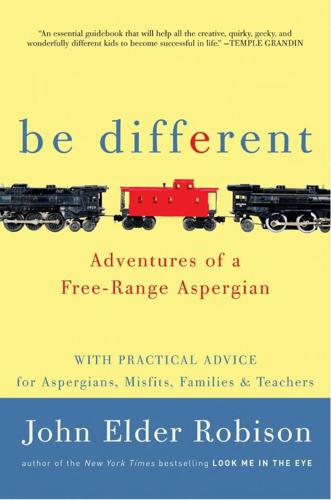
Be Different: Adventures of a Free-Range Aspergian With Practical Advice for Aspergians, Misfits, Families & Teachers
by
John Elder Robison
Published 22 Mar 2011
You might think the correct word would be “normal,” but we’ve all heard the psychologist’s pronouncement “There is no such thing as normal.” Professionals have coined the word “neurotypical” to describe any human who does not have some form of autism. “Neurotypical” has been in use for a number of years, but I’ve never liked it. Try it yourself. Say it in front of a mirror and watch your mouth. It’s like you’re chewing something just to spit the syllables out. It’s so clinical—you can almost smell the doctor’s office when you say it. “Neurotypical” is the kind of word you hear in science fiction movies, when they select the specimens for dissection. I wanted a friendlier word, something that didn’t remind me of tongue depressors and needles.

NeuroTribes: The Legacy of Autism and the Future of Neurodiversity
by
Steve Silberman
Published 24 Aug 2015
“autistic space”: “Autism Network International: The Development of a Community and Its Culture,” Jim Sinclair. 2005. http://www.autreat.com/History_of_ANI.html Its founder, Ray Kopp, was the father of a legally blind girl named Shawna: “My Affiliation with Autism,” Ray Kopp. http://www.syr.edu/~rjkopp/data/history.html, accessed through archive.org Kopp launched the list in 1992: Autism List FAQ. Archived at http://kildall.apana.org.au/autism/autismlistfaq.html neurotypical: “Neural connections in Toronto,” Steve Cousins. Our Voice, Vol. 1, No. 3, 1993. “Neurotypical syndrome is a neurobiological disorder”: Institute for the Study of the Neurologically Typical. Muskie, 1998. http://isnt.autistics.org/ “Saying ‘person with autism’ suggests that autism is something bad”: “Why I Dislike Person-First Language,” Jim Sinclair.
…
Even a chatty “more able” adult could temporarily lose speech, and the term low-functioning often obscured talents and skills that could be brought out by providing a more suitable environment or an alternate means of communication. Like any nascent subculture, this emerging community gave birth to its own in-group slang. The most enduring ANI neologism was the term neurotypical, used as a label for nonautistic people for the first time in the group’s newsletter. With its distinctly clinical air, the term (sometimes shortened to NT) turned the diagnostic gaze back on the psychiatric establishment and registered the fact that people on the spectrum were fully capable of irony and sarcasm at a time when it was widely assumed that they didn’t “get” humor.
…
With its distinctly clinical air, the term (sometimes shortened to NT) turned the diagnostic gaze back on the psychiatric establishment and registered the fact that people on the spectrum were fully capable of irony and sarcasm at a time when it was widely assumed that they didn’t “get” humor. Carrying the meme to its logical extreme, an autistic woman named Laura Tisoncik launched an official-looking website in 1998 credited to the Institute for the Study of the Neurologically Typical. “Neurotypical syndrome is a neurobiological disorder characterized by preoccupation with social concerns, delusions of superiority, and obsession with conformity,” the site’s FAQ declared. “There is no known cure.” Taking a cue from the radical Deaf community, ANI members began to refer to themselves as “Autistic” instead of saying that they were people with autism.

The Book of Woe: The DSM and the Unmaking of Psychiatry
by
Gary Greenberg
Published 1 May 2013
“Spending time in an environment where the diagnosis is embraced as a difference, I started to see my diagnosis differently.” The fact that it wasn’t a “mental illness,” at least not by her definition, had become good news, a “gift” even. There were advantages to not being neurotypical, as people with Asperger’s sometimes describe the rest of us. “There are certain things that neurotypical women in particular are obsessed with, shoes and clothes and makeup, that I’m very glad I’m not,” she said, adding that it isn’t just the girly preoccupations she was pleased to be relieved of. “In general, I’m very content with being completely outside of the popular culture fray.”
…
Fred Volkmar weighed in, saying that “their social interactions are a disaster.” But Osborne had some good news to report. Although, as the school director said, “everything has to be taught to them,” it was proving possible to do that. In classrooms, support groups, and doctors’ offices, Asperger’s patients were learning how to negotiate the neurotypical world. A teacher demonstrated how her students had memorized facial expressions so they could read other people’s signals. With techniques like this, according to Osborne, “Asperger’s children can at least learn to imitate social behavior that other kids learn intuitively.” Like Frankenstein’s monster observing human life through a window, they were forced to watch the rest of us from a distance.
…
And its charms are on the increase, at least according to the Aspie who predicted to Osborne that “society will actually become more and more dependent on people with Asperger’s to usher it through the difficulties ahead.” That was more than a decade ago, and since then, interaction has come to rely less and less on the nonverbal cues that Aspies are so bad at decoding and more and more on the tablets and handhelds, the binaries of emoticons and tweets, that they are more suited to. While the neurotypical among us grow more and more bewildered by the barrage of information fed to us by our devices, the burdens of Asperger’s, at least in the view of some of the diagnosed, increasingly become a gift. Even for those who think this is an ominous sign—like the novelist Jonathan Lethem, who speculated that people with Asperger’s are “canaries [who] sensed before anyone else28 that we’d entered a coal mine”—the fit between disease and society is striking, the temptation to claim the label obvious.
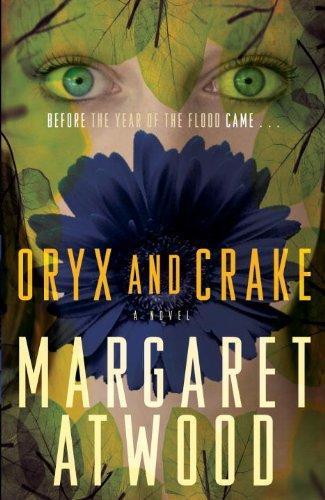
Oryx and Crake
by
Margaret Atwood
Published 5 May 2003
Demi-autistic, genetically speaking; single-track tunnel-vision minds, a marked degree of social ineptitude – these were not your sharp dressers – and luckily for everyone there, a high tolerance for mildly deviant public behaviour. More than at HelthWyzer? asked Jimmy. Compared to this place, HelthWyzer was a pleebland, Crake replied. It was wall-to-wall NT s. NT s? Neurotypicals. Meaning? Minus the genius gene. So, are you a neurotypical? Jimmy asked the next week, having had some time to think this over. Also to worry about whether he himself was a neurotypical, and if so, was that now bad, in the gestalt of Crake? He suspected he was, and that it was. But Crake never answered that one. This was his way: when there was a question he didn’t want to address, he acted as if it hadn’t been asked.
…
But as with the tit implants – the good ones – maybe he wouldn’t be able to tell the difference. “They’ve already got the takeout franchise operation in place,” said Crake. “Investors are lining up around the block. They can undercut the price of everyone else.” Jimmy was becoming annoyed by Crake’s way of introducing him – “This is Jimmy, the neurotypical” – but he knew better than to show it. Still, it seemed to be like calling him a Cro-Magnon or something. Next step they’d be putting him in a cage, feeding him bananas, and poking him with electroprods. Nor did he think much of the Watson-Crick women on offer. Maybe they weren’t even on offer: they seemed to have other things on their minds.

Who’s Raising the Kids?: Big Tech, Big Business, and the Lives of Children
by
Susan Linn
Published 12 Sep 2022
But these products and the business models that propel them remain relevant because they continue to be emblematic of how and why children’s wellbeing is threatened when kids are left unprotected in the marketplace. Finally, most of my experience working with and on behalf of children has been with neurotypical kids coping with difficult physical and psychosocial challenges. So when I talk about children in the following chapters, I’m referring primarily to neurotypical kids. I absolutely recognize the need for addressing the impact of tech and commercialism on neurodivergent children, but it’s beyond the scope of this book. What’s happening to children in our digitized, commercialized world is deeply distressing.
…
Reaching up, she first feels one of her own ears and then both ears simultaneously. She alternates between tracing the doll’s ear and her own a few more times until, satisfied, she turns her attention elsewhere. I am witnessing a paradoxically astonishing and completely ordinary feat of human learning—at least for neurotypical kids in safe, loving environments. Something piques Arielle’s curiosity—is her body like her doll’s body? With no outside prodding or direction, she initiates the process of satisfying that curiosity (feeling the doll’s body and her own). When her initial attempt fails (the doll’s toes and Arielle’s ear are not similar), she persists in her quest for an answer by trying out another possibility (finding the doll’s ear and comparing it with her own).
…
Paul, 131 “market segmentation,” 51 Markey, Ed, 38 Massachusetts Institute of Technology (MIT), 44 Masters of Spinjitzu online games, 94 “material culture,” 154, 158 materialism and materialistic values, 8, 79, 82–92, 96–100 advertising and exacerbation of, 83 Ariana Grande’s “7 Rings,” 90–91 buying happiness, 7–8, 79, 88, 98, 16 and Channel One News in schools, 182–83 and children’s relationships, 89 climate change and consumption, 83, 88 and “collectibles,” 83–88 defining, 83 external rewards, 8, 97–102, 104–8, 193, 194 retail therapy, 90–91 Mattel, 57–58, 142 American Girl Dolls, 139 Aristotle smart device, 36–38 Barbie, 85, 142, 155–57, 162 McDonald’s, 177, 199 as “American institution,” 59, 60 brand loyalty, 66–67 fast food SEMS and advertising in schools, 165, 167, 172 Happy Meal toys, 84 “McTeachers’ Nights,” 165 school-based nutrition program, 172 social media followers, 63 McNeal, James, 66 Me Too movement, 152 Mead, Margaret, 230 media literacy, 205, 222 Messenger Kids (MK), 74–75, 219 Meta, xiv, 46, 74–76, 151–52, 176, 240 algorithms and racial biases, 151–52 Russian interference in 2016 election, 176 See also Facebook; Instagram; Instagram for Kids MGA Entertainment, 25n, 85–86 Microsoft, 53–54 millennial parents and families, 120–23 Minecraft, 53–55, 110, 218–19 minimalism, 88 mining (data mining), 47–48, 81 Minnesota State Legislature, 204–5, 236 Mister Rogers’ Neighborhood, 3 MIT Technology Review, 190 Molnar, Alex, 167–68, 197 mommy bloggers, 87–88 Monster High fashion dolls, 59 Montgomery Ward catalog, 158–59 Morrison, Toni, 155 Mosseri, Adam, 75 Motivation external rewards, 8, 97–102, 104–8, 193, 194 intrinsic, 8, 97–103, 107–8 MTV, 114 Museum of Fine Arts (Boston), 120 Museum of Science (Boston), 119–20 My Little Pony (TV series), 19, 28 Myers, KK, 235–37 Nabisco, 105–6 nagging, 78, 109–24, 227 and child-targeted advertising, 78, 109–24 and early adolescence, 110 and “free” apps, 46, 119, 217 harm to families, 78, 82, 109–11, 115, 117–20, 122–24, 231 international market research on strategies to encourage, 116–17 marketers’ work to neutralize parents as gatekeepers, 111–12, 122–23 and millennial parents, 120–23 “The Nag Factor Study” (1998), 113–15 nagware and pop-up ads, 46, 186–87, 189 “persistence nagging” and “importance nagging,” 113 “pester power” (“nag factor”), 112–15, 117 saying “no” to children, 227 and Toys “R” Us free camps, 60 nagware (pop-up ads), 46, 186–87, 189 A Nation at Risk (1983 report), 166 National Association of Manufacturers, 182 National Education Association, 166 National Education Policy Center at the University of Colorado, 192, 195 National Football League (NFL), 4 National Parent Teacher Association (PTA), 179, 238 national parks, advertising in, 7 National Public Radio, 68 nature experiences advertising in national parks, 7 awe and, 23–24 spending tech-free time outdoors, 224 Nestle, Marion, 163 neurotypical children, 9, 12 New York Times, 36, 38, 54, 68, 71, 105, 119, 131, 170, 184 Newton, Isaac, 22 Niantic, 102–3 Nickelodeon, 86–87, 90, 114, 142–43 Nike, xiv, 121, 169 1984 (Orwell), 68 Nineteenth Amendment to the U.S. Constitution, 230 Nintendo, 84, 102, 116, 167. See also Pokémon Noble, Safiya Umoja, xv, 148–49, 151 nonprofits, corporate funding of, 222 notifications.
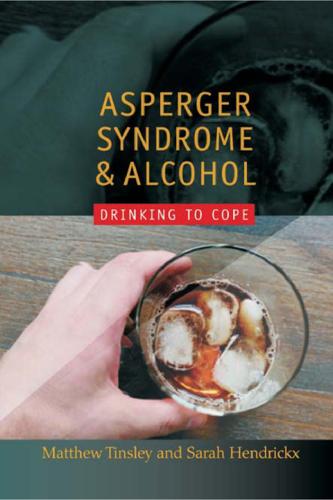
Asperger Syndrome and Alcohol: Drinking to Cope?
by
Matthew Tinsley
and
Sarah Hendrickx
Published 31 May 2008
• There are also high levels of co-morbidity between anxiety and admittance to alcohol rehabilitation units, with around 65 per cent of those admitted demonstrating both conditions (Mental Health Foundation 2006). 34 / ASPERGER SYNDROME AND ALCOHOL In a number of small steps, we have moved from Asperger Syndrome via social anxiety to alcoholism. It is very likely that Matt is not the only person with AS who has used alcohol as a coping strategy for tolerating the neuro-typical world. The final word is from a young woman with Asperger Syndrome: Q: Is there a link between anxiety and drinking alcohol for you? A: Yes, because when I am drunk I don’t care as much whether people secretly don’t want to talk to me. Normally I am constantly aware of the possibility that I am not acting appropriately, and I stress out about it.
…
Removing this protective layer against the confusions and expectations of a social world may unearth high levels of anxiety and depression. The management of anxiety must go hand in hand with the withdrawal of alcohol. It is important that support workers have a good knowledge of AS, as the perspective of the AS alcoholic may be somewhat different to a neuro-typical alcoholic. Underneath the alcoholism there will always be a person with autism who has to learn to cope with the world without the crutch of alcohol. The desire to return to alcohol as a medication against that anxiety will be particularly strong for this person. There may also need to be a programme in social skills to enable the person to feel more confident about social situations and reduce the need for the substance.

Doppelganger: A Trip Into the Mirror World
by
Naomi Klein
Published 11 Sep 2023
Outside of school hours, we explored a dazzling array of extracurricular activities geared toward neurodiverse kids—music lessons, adapted plays, and Buddy Ball, a sweet weekly sports program that paired neurotypical teens with kids on the spectrum, one-to-one. This truly seemed like a new world. One thing that wasn’t different, however, was the search for cures. Within five minutes of arriving at Buddy Ball, I met a father who pressed a glossy brochure into my hand about the supposed link between vaccines and autism. He laid out his evidence, which amounted to a control group of two. His older child, he explained, was born abroad and was not vaccinated. That child is neurotypical. His youngest was born in the United States, was vaccinated, and is autistic.
…
But as with misinformation related to Covid, social media only intensified tendencies that were already present. In my conversations with autism parents who have gone the vaccine-blaming route, I am always struck by their sense that they have been cheated or wronged; that someone or something robbed them of what they were sure were their rightful, neurotypical kids and substituted them with ones who were different and defective; that their families had somehow been invaded. My doppelganger is now thoroughly entangled in the autism misinformation movement: she platforms its key figures, and they excitedly platform her; she proudly posts photographs of herself with RFK Jr. and tells him, regarding his rabidly anti-vax Children’s Health Defense that, “I respect all the research your organization does.
…
It’s not unlike what some parents of trans kids go through: they often need a little time to grieve the daughter or son they thought they had before they can fully accept their child’s gender identity. Sometimes this is just a short, painful phase on the parent’s part, whether they are grieving the gender-conforming child or the neurotypical one (or, as is the case not infrequently, both). Kids, to our good fortune, tend to be pretty understanding about these difficult parental phases. The trouble is, as I have learned in the autism parent scene, there are plenty of mothers and fathers who can’t seem to get past the shattering of their fantasies, and these are the ones who get stuck searching for cures, conspiracies, and extreme therapies that seek to “extinguish” behaviors rather than understand and support them.
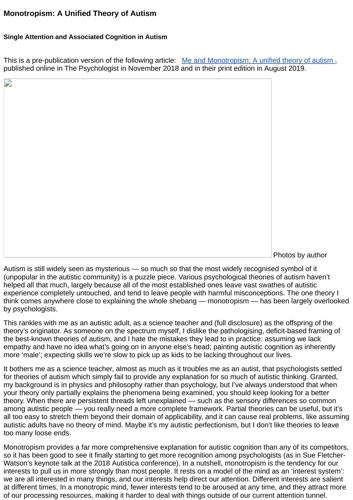
Monotropism: A Unified Theory of Autism
by
Unknown
Being unable to process multiple channels of input most of the time makes the combination of spoken words, body language and eye contact tremendously challenging. Add autistic inertia to the mix, and we can also see why autistic people often need more processing time and can find the back-and-forth of neurotypical conversation difficult to keep up with. Monotropic processing also explains the literal-mindedness that autistic people are notorious for. Polytropic minds have multiple interests aroused at any time, pulling in multiple strands of information, both external and internal. They are primed to be on the look-out for things like social implications, and effortlessly decode metaphors and indirect language.
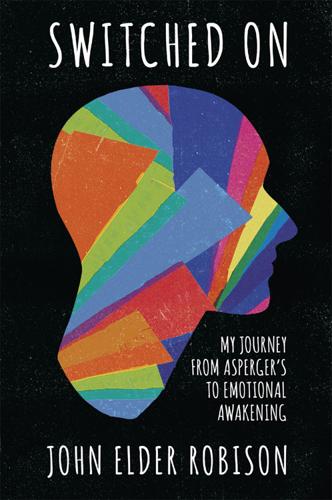
Switched On: My Journey From Asperger's to Emotional Awakening
by
John Elder Robison
Published 6 Apr 2016
One idea that I’ve come back to throughout this book is the notion that my brain (or anyone else’s) might differ from the brain of a typical person. But the truth is, there is really no such thing as a “typical” brain, because every human is atypical in some or many ways. The “neurotypical person” is a construct, established by scientists who need parameters by which to measure the disparate statistics of different individuals. Last year, Dr. Just tried a new kind of experiment with interesting implications for what “neurotypical” and “different” mean. Marcel put thirty-four young adults in his fMRI scanner and asked them to imagine the following verbs: compliment, insult, adore, hate, hug, kick, encourage, and humiliate.
…
It’s great to hear your story, they tell me, but what did the peer-reviewed journal accounts say? In July 2011, Shirley, Lindsay, Alvaro, and others involved in the research published the results of the first TMS study in the European Journal of Neuroscience, under the heavy title “Brain Stimulation over Broca’s Area Differentially Modulates Naming Skills in Neurotypical Adults and Individuals with Asperger’s Syndrome.” The three-year lag between our participation in the TMS lab and publication of the results is typical in medical research. Reading their paper feels funny, because it’s a very dry account of what was a very emotional and transformative time for me, and I’m sure for the other subjects.
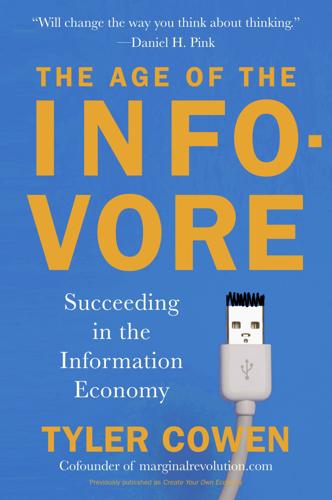
The Age of the Infovore: Succeeding in the Information Economy
by
Tyler Cowen
Published 25 May 2010
General labels, such as “autistic,” can be useful. But we need to remain aware of how much labels are imperfect substitutes for more detailed forms of knowledge about particular individuals. They are placeholders for a deeper understanding that is yet to come. And that’s not just for the autistics. Most so-called neurotypicals aren’t typical at all and if we think they are it’s because we don’t yet appreciate their uniqueness in a sufficiently informed manner. The deeper our understanding of human neurodiversity, and the deeper our appreciation for the individual, the more we can appreciate how many different ways the human mind can contemplate the beauty and wonder of creation.
…
Often the autistic can be less focused if they are distracted and in some regards they are more easily distracted than non-autistics; remember the discussion of the startle reaction? For a discussion of this issue, see Dermot Bowler, Autism Spectrum Disorders: Psychological Theory and Research (cited above), 115–17. In any case, one can think of neurotypicals as trying, through education, to attain the non-distracted maximum focus found in many autistics. For the Department of Education figure, see www.ed.gov/about/overview/budget/budget03/summary/app1/edlite-index.html. CHAPTER 6: THE NEW ECONOMY OF STORIES You’ll find Schelling’s essay in his Choice and Consequence: Perspectives of an Errant Economist (Cambridge, MA: Harvard University Press, 1984).
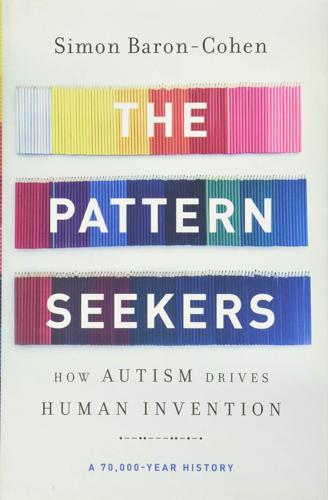
The Pattern Seekers: How Autism Drives Human Invention
by
Simon Baron-Cohen
Published 14 Aug 2020
Tom Monte, an SAP manager, says that the contributions of one of his autistic colleagues are invaluable: “He uncovers things that we might overlook. He’ll ask questions, and I think, ‘Why aren’t my senior guys asking these questions?’”10 HP Enterprise’s neurodiverse teams are 30 percent more productive in software testing and debugging than teams of “neurotypical” employees.11 Key to the success of these programs is the training and support given to autistic employees to ensure that they can manage the social aspects of the workplace—enough support that employees, such as SAP’s Carrie Hall, feel confident to proudly identify themselves as autistic to their colleagues.12 The idea that autistic people think in a refreshingly different way as a result of their if-and-then pattern-seeking was beautifully borne out in a study of creativity and lateral thinking that used a classic test: “How many uses can you think of for a brick and a paper clip?”
…
13 Most people give predictable “simple” answers, such as using a paper clip to reset their iPhone. In contrast, most autistic people gave unexpected, less predictable, more “complex” answers, such as using a paper clip as a weight for the front of a paper airplane or heating up a paper clip to suture a wound. These answers made logical and scientific sense, but if you’re neurotypical, would you have thought of such left-field examples? The Israeli army has a special unit, called Unit 9900, for autistic people who wish to go through military service and whose excellent attention to detail and pattern-seeking talents can be harnessed to the army’s needs.14 Autistic people are asked to detect anomalies in satellite images of locations on Earth, to spot any patterns that look unusual.

Ten Steps to Nanette: A Memoir Situation
by
Hannah Gadsby
Published 15 Mar 2022
STEP 6 WHIRL, INTERRUPTED You don’t have to be an expert to know that people with autism don’t get to speak about their own experiences. Until very recently, autism has largely only been understood through the prism of the experience of parents and as a list of observations that mostly neurotypical medical professionals have made and assigned meaning to. Most pervasively, autism is known as a side effect of a disease called Andrew Wakefield—the quack who falsely linked autism with vaccinations after he ate an activated walnut and became a Leprechaun.[*1] The myths around ASD and ADHD have wasted enough of my life, so I don’t really want to waste any more of my time thinking about them, much less writing them down.
…
But searching for the connections between the big picture and the little picture, however, is a very ASD thing to do. I am never not cross-referencing the trees with the forests, and it can be a very exhausting way to engage, but I wouldn’t change it for the world, because I believe communities need thinkers like me. I see a fault in the idea, put forward by neurotypical “experts,” that autistic people have mind blindness, which essentially suggests that we are unable to understand the inner workings of other people. I believe we all have mind blindness; why else would we invent language? The problem is that communication skills are developed atypically in autistic people, and, most often, very slowly.
…
I say I want one thing, then moments later I will say that I need the opposite. This is not a reflection of my character but rather it is a reflection of my neurobiological functioning. I am unable to intuitively understand what I am feeling, and I can often take a much longer time to process the effects of external circumstances than neurotypical thinkers. But it is they who get impatient with me, and under that pressure I feel forced to guess my needs before I have had time to process stuff in my own way, and so mistakes are made. I can be cold and not know it. I can be hungry and not know it. I can need to go to the bathroom and not know it.
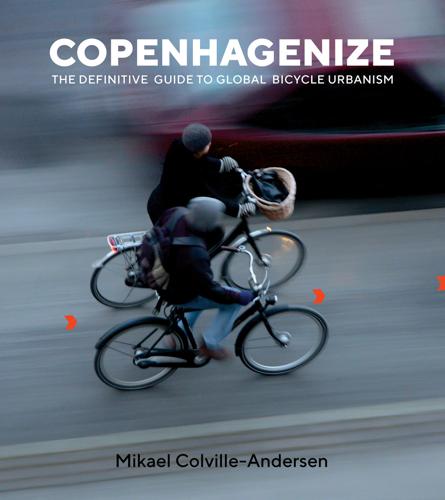
Copenhagenize: The Definitive Guide to Global Bicycle Urbanism
by
Mikael Colville-Andersen
Published 28 Mar 2018
Teaching them, however, involves giving them the tools and skills to navigate a world that isn’t at all designed for them. Teachers have to learn how to pantomime a system that is alien to these kids but completely normal for those of us who are neurotypical. They will always be autistic and will forever be forced to try to act in ways that appease the neurotypical society around them. At this point I said to her, “Just like cyclists in cities.” She nodded. “Exactly. A city like Portland has been designed for years to be car-centric. A system was developed. People in the suburbs learned this system early and car dependency is the result, simply because there is really only one system.

Singularity Rising: Surviving and Thriving in a Smarter, Richer, and More Dangerous World
by
James D. Miller
Published 14 Jun 2012
Others in the Singularity community agree that it attracts autistics. If the Singularity is a realistic and dangerous possibility, and if autistics have some special gift for understanding it, then embryo selection against autism would lower humanity’s survival prospects. Autistics often consider themselves “born on the wrong planet” because neurotypical (“normal”) humans are so different from them.213 If, therefore, embryo selection reduced the number of autistics, parents would have even greater reason to fear having an autistic child, causing them to even more strongly select against autism-prone embryos. Governments could correct a bias against autistic children by paying parents to have them.
…
Lee Kuan Yew, the former prime minister of Singapore, described his daughter’s child, diagnosed with Asperger syndrome, as being “intellectually normal . . . good-natured and the best-behaved and most likeable of my grandchildren.”214 Technology might soon reduce the social costs of autism. Much human-to-human communication takes place on an unconscious, nonverbal level. Most neurotypicals send nonverbal signals and automatically incorporate the signals they receive into their behavior. These signals are analogous to your sense of balance, which keeps you from falling over without your conscious mind having to do much work. High-functioning autistics’ blindness to this kind of communication makes it challenging for them to fit in socially.
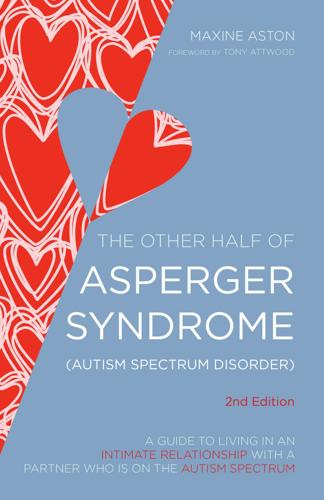
The Other Half of Asperger Syndrome (Autism Spectrum Disorder): A Guide to Living in an Intimate Relationship With a Partner Who Is on the Autism Spectrum Second Edition
by
Maxine Aston
Published 21 Feb 2014
Online Asperger Syndrome Information and Support (OASIS @ MAPP) (www.aspergersyndrome.org), a single resource for families and medical professionals dealing with the challenges of Asperger syndrome, autism and pervasive developmental disorder/not otherwise specified (PDD/NOS). Asperger Partner (www.aspergerpartner.dk), a Danish neurotypical site with some articles in English. Professor Tony Attwood (www.tonyattwood.com), a well respected author and expert on the subject of Asperger syndrome, especially as it relates to personal relationships and family dynamics. REFERENCES APA (American Psychiatric Association) (1994) Diagnostic and Statistical Manual of Mental Disorders (4th edn).
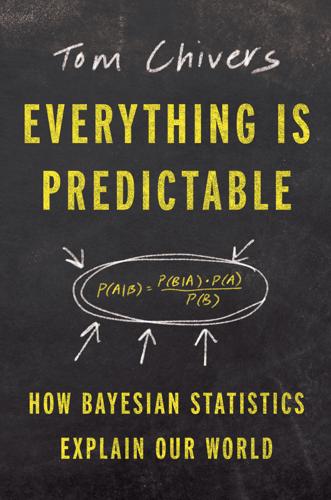
Everything Is Predictable: How Bayesian Statistics Explain Our World
by
Tom Chivers
Published 6 May 2024
“My fingers pick up the pen,” she says, “but I don’t control them. What they do is nothing to do with me.”31 The Bayesian explanation is that PH’s predictions of how her arm will move are less precise, so that when she moves her arm, that movement is not “subtracted” from her experience in the same way it would be for a neurotypical person’s. She experiences the movement unsuppressed, just as if someone elsse were to pick her arm up and move it for her. It also explains visual and auditory hallucinations. Schizophrenic people often report hearing voices in their head: “thought insertion.” But under this model, they’re just hearing the voice all of us, or at least most of us, hear—our own internal monologue.II The difference is just that, for most of us, those voices are predicted, and therefore, the sensation is suppressed, like with the moving arm.
…
But under this model, they’re just hearing the voice all of us, or at least most of us, hear—our own internal monologue.II The difference is just that, for most of us, those voices are predicted, and therefore, the sensation is suppressed, like with the moving arm. But for schizophrenics, it’s as shocking and as loud as if someone spoke inside their mind. And small visual disturbances that generate minor low-level prediction errors might get explained away by higher-level processors in neurotypical people, because their priors are strong enough to say, “Come on, faces don’t point inward,” or whatever. They would predict visual changes from moving their head, or noisy data coming in from their blotchy retinas, and suppress it in the usual way. But schizophrenic people, with their weaker priors, don’t predict the world so precisely, so that same data coming in causes prediction errors, raises alarms, and gets incorporated into their model of the world.

Heaven Is a Place on Earth: Searching for an American Utopia
by
Adrian Shirk
Published 15 Mar 2022
It was started in 1939 by a German pediatrician and educator who fled the Nazis. Each of their secular intentional communities is home to a mixture of about one hundred adults with developmental and intellectual differences living and working, in an ethic of mutual aid, alongside one hundred neurotypical adults—and, I believe, some children, too. The neurotypical adults do not understand themselves as charity workers, but as part of a community of equals in a non-hierarchical system of life in something that resembles a nonbiological family structure. For the most part, the Camphill communities also collectively run biodynamic farms, an organic farming practice that includes additional esoteric practices as a means to emphasize the spiritual interconnectedness of the ecosystem, the land, and the farmers.
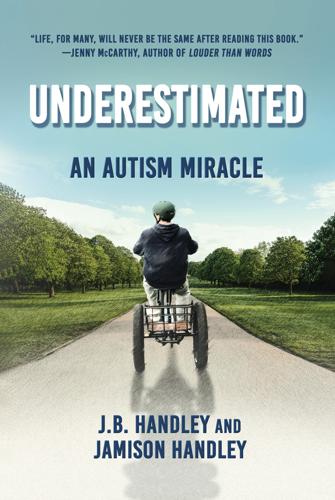
Underestimated: An Autism Miracle
by
J. B. Handley
and
Jamison Handley
Published 23 Mar 2021
I may not be in the position to offer advice on how to conquer it because I’m still trying to figure it out. What I do know is anxiety can inhibit your desire to communicate, but perseverance will win every time. Q: What do you wish every human knew about nonspeaking individuals on the autism spectrum? A: We are not aliens. We have the brain, heart, dreams, and desires of a neurotypical person. The main difference lies in the way we process information and express our emotions. Upon meeting us you must always assume intellect. We may not appear to be your definition of smart, but there is so much more to us then you may realize. Never underestimate a nonverbal person, we are fighters.
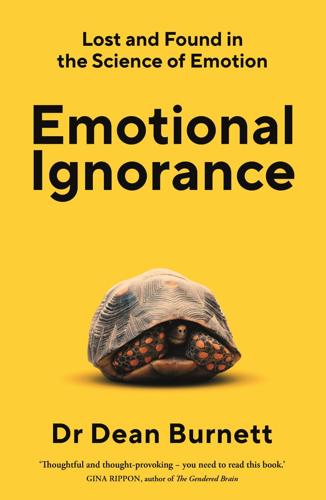
Emotional Ignorance: Lost and Found in the Science of Emotion
by
Dean Burnett
Published 10 Jan 2023
Given how empathy underpins a great deal of interpersonal interaction, this can be a problem. If you’re not empathising with someone correctly, it’ll hamper your ability to connect and communicate. A striking example of this is the ‘double empathy’ problem, which can happen when an autistic person interacts with a neurotypical individual.96 Here, the differing workings of autistic and neurotypical brains can mean that the experiences each person has, and the resulting memories obtained via them, aren’t particularly helpful for interpreting the emotional cues produced by the other. It’s as if each is displaying their emotions in a language that the other person is still learning.

Coders: The Making of a New Tribe and the Remaking of the World
by
Clive Thompson
Published 26 Mar 2019
Although he was obviously a bit bombastic and prone to launching into minilectures on just about any subject that came up, I liked him a lot and found him witty and frequently charming. He seemed quite good at picking up on the emotional cues of those around him. But it was, he said, the result of years of practice, training himself to act “neurotypical.” “I learned how to do it,” he said, one night as we drove to a local bar for a drink. He was raised in New York by parents who were intellectuals: a mother who was an elementary-school reading teacher; a father who ran a socialist newspaper. (It was among the first US publications to be designed entirely digitally, Cohen recalls, which is one reason he grew up with computers around the house.)
…
When Cohen was in his early twenties, he read an article about the behavior of people with Asperger’s, though, and felt a jolt of recognition. So he decided to hack his behavior much in the way he’d probe and tweak a computer system. He read books on Asperger’s, and as he walked around the city, he closely studied how neurotypical people interacted, gathering reams of what was, in essence, test data. “I intentionally studied interactions and eye contact in particular,” he told me. “I’m really big on duration of eye contact.” Indeed, he’d even debugged the Asperger’s therapy recommendations; though all the books highlighted the importance of eye contact, they rarely mentioned duration.

Whiplash: How to Survive Our Faster Future
by
Joi Ito
and
Jeff Howe
Published 6 Dec 2016
As I write this Finn is nearing his ninth birthday. He faces an array of physical and intellectual challenges that include, but are not limited to, autism. None of this is meant to garner sympathy. My wife and I are incredibly lucky to possess the resources, financial and otherwise, to provide Finn and his neuro-typical sister a good life. This story is meant to illustrate that many of these principles have profound personal implications. Finn excels at many things—he does a mean headstand, and is a cunning strategist in a water fight—but his greatest talent may lie in disrupting our own humble status quo. I never really know when we might need to leave the house—it could be for the emergency room, or to sate an urgent need to run up and down the aisles of our local grocery store—or return to it.
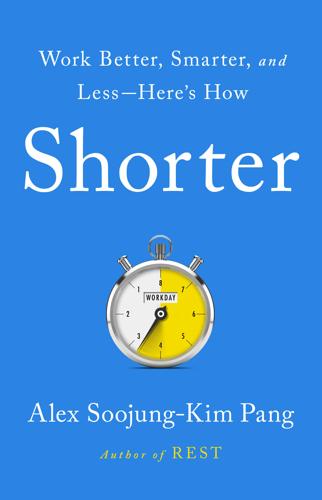
Shorter: Work Better, Smarter, and Less Here's How
by
Alex Soojung-Kim Pang
Published 10 Mar 2020
A lot of this was thanks to toxic workplaces: 48 percent said that their workplaces contributed to their poor mental health, and 91 percent said that burnout was a problem at their companies. A 2019 Stack Overflow survey found that 30 percent of software developers deal with mental health challenges like ADHD, emotional disorders, and anxiety, or are not neurotypical. While almost two-thirds of the companies in this book are from these three industries, the remaining third are quite varied. They include manufacturers of rice-milling machines and bespoke pressed-metal parts, organic cosmetics companies, nursing homes, an auto repair shop, insurance and financial companies, hotels, online and print publishers, and call centers.
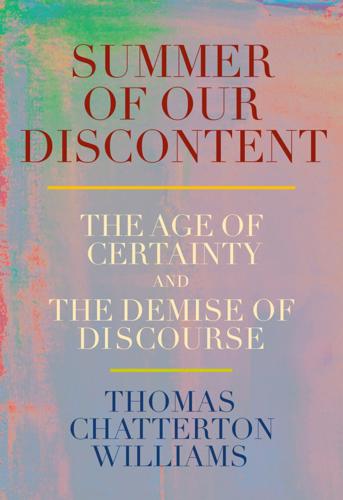
Summer of Our Discontent: The Age of Certainty and the Demise of Discourse
by
Thomas Chatterton Williams
Published 4 Aug 2025
This dynamic would be on much more flagrant display as the spate of brazen, unprovoked physical attacks and even killings of Asian Americans by black Americans during the pandemic became a subject the mainstream media could not find the language to make sense of. *8 And again in 2023 with the death on the New York City subway of Jordan Neely at the hands of Daniel Penny. *9 As well as patriarchy, Islamophobia, homophobia, transphobia, fatphobia, xenophobia, ableism, neurotypicality, and more. *10 This is the idea that whiteness extends beyond individuals who are designated racially white to involve cultural norms and social practices thought to uphold white dominance and value systems more generally—even among racially and ethnically non-white people. In other words, in this framework, certain ideas, politics, attitudes, and behaviors are able to deracinate so-called people of color, strip them of agency, and reduce them to vehicles of white supremacy with or without their consent in the matter.

JPod
by
Douglas Coupland
Published 30 Apr 2007
Most people are able to sift out the day's excess information without ever thinking about it, but to the tech worker exhibiting autistic—okay, let's just say the word: geek—to most geeks, a hug is not a hug, it's the physical equivalent of holding a novelty marine foghorn up to the ear and blasting it directly into the central nervous system. When you hug a geek, you're overloading them in a manner they find intolerable. They feel and express shock and revulsion when touched. Here's a personal example. Low-grade autistics have problems with sensory input, sound being a biggie. My boyfriend, Ethan, is a seemingly average NT (neurotypical), and yet he exhibits a specific autistic variant called hyper acuity. He has a small, specific band of sound frequencies that make him go mental. If I'm in the bathroom with the door closed and Ethan is in the living room watching a Wrestling Entertainment marathon with the volume set on high, all I have to do is clip one of my toenails with a small generic nail clipper and his entire cerebral system shuts down.

The Rationalist's Guide to the Galaxy: Superintelligent AI and the Geeks Who Are Trying to Save Humanity's Future
by
Tom Chivers
Published 12 Jun 2019
Chapter 9 You can be intelligent, and still want to do stupid things So your AI program has led to disaster, but at no point has it disobeyed its programming. It has obeyed its program perfectly, to the letter. The trouble is that, as it turns out, we don’t really want things to obey their instructions to the letter. We know that there are a million assumptions encoded in a brief instruction that don’t need to be explicitly made clear, because all neurotypical humans will share them sufficiently that they’re taken as read. (To pick an example off the top of my head, if someone told you to collect the dry cleaning, you’d know that they meant just the dry cleaning that actually belonged to you, not all the dry cleaning in the shop.) It’s not just about making an AI that can fulfil the goals you give it: it’s about making an AI that shares all the unspoken goals that humans have, and knows what you meant to say, even if you couldn’t actually put it into words yourself.
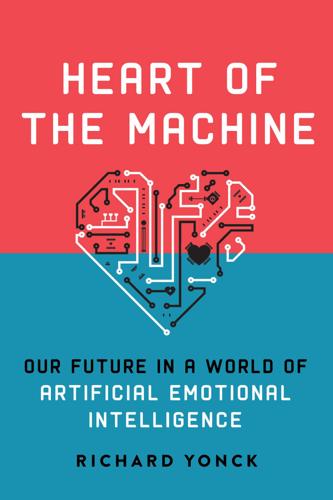
Heart of the Machine: Our Future in a World of Artificial Emotional Intelligence
by
Richard Yonck
Published 7 Mar 2017
Consider that even human intelligence and consciousness aren’t all that uniform across the population. While we tend to think of all or most human beings as self-aware, it’s worth bearing in mind that as with so many aspects of intelligence, emotional awareness, and personality, this may exist along a spectrum. In autism, for instance, fMRI brain scans reveal that while neurotypical subjects show increased activity in the ventromedial prefrontal cortex when engaged in self-awareness tests, those diagnosed with autism did not show the same increase in activity.7 The study reports that those “individuals whose ventromedial prefrontal cortex made the largest distinction between mentalizing about self and other were least socially impaired in early childhood, while those whose ventromedial prefrontal cortex made little to no distinction between mentalizing about self and other were the most socially impaired in early childhood.”

Cynical Theories: How Activist Scholarship Made Everything About Race, Gender, and Identity―and Why This Harms Everybody
by
Helen Pluckrose
and
James A. Lindsay
Published 14 Jul 2020
“Disableism,” on the other hand, denotes prejudice against disabled people, including the idea that their disabled status exists outside of the usual understanding of “normal” and the belief that an able-bodied person is superior to a disabled person. This oppression is part of a constellation of different forms of bigotry. As the self-described autistic, disabled, asexual, and genderqueer activist Lydia X. Y. Brown defines it, [A]bleism might describe the value system of ablenormativity which privileges the supposedly neurotypical and ablebodied, while disableism might describe the violent oppression targeting people whose bodyminds are deemed deviant and thus disabled. In other words, ableism is to heterosexism what disableism is to queerantagonism.5 Accordingly, queer Theory, with its focus on deconstructing the normal, has proven particularly compatible with disability studies.
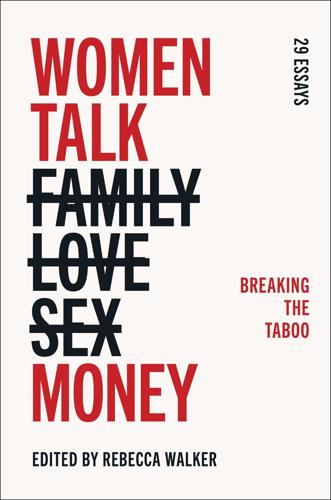
Women Talk Money: Breaking the Taboo
by
Rebecca Walker
Published 15 Mar 2022
I had to be honest about the insecurities, obsessions, and social media addictions that threatened my own sanity and sovereignty, my ability to see myself and the world around me clearly, without the distortions of an app (and a society) that profited off my own lack of empowerment. I don’t want to monetize every part of my life. Nor do I want to broadcast it as a model to which anyone else should conform. My experience as a neurotypical, able-bodied, straight cisgender white woman from a land-owning family of multigenerational entrepreneurs is just one tiny prism of the vast human experience. I don’t have all the answers, and I make mistakes all the time. But I’d prefer that my presence, my work, my writing make space for a symphony of unique voices, realities, and truths rather than compound a silencing by the normative whiteness, exploitative capitalism, and patriarchy to which social media is largely enslaved.
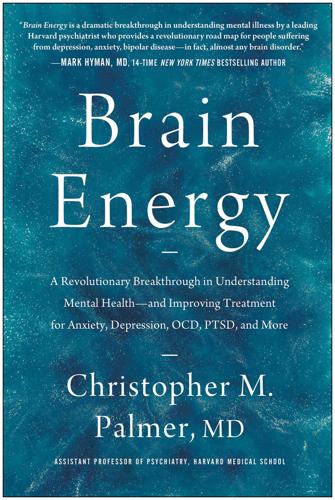
Brain Energy: A Revolutionary Breakthrough in Understanding Mental Health--And Improving Treatment for Anxiety, Depression, OCD, PTSD, and More
by
Christopher M. Palmer Md
Published 15 Nov 2022
One research study demonstrated a direct relationship between everyday stress and changes in mitochondrial function in humans.2 The researchers developed a test of mitochondrial health that includes both the quantity and function of mitochondria within white blood cells and assessed whether this metric was associated with daily stress. They studied ninety-one mothers, some who had children with autism and others who had neurotypical children, and assessed their daily mood and stress levels to see if these were related to the mitochondrial health index (MHI). They found that they were. Overall, the mothers who had high levels of stress and low moods had lower MHI. But of course, stress levels and moods can change on a daily basis.
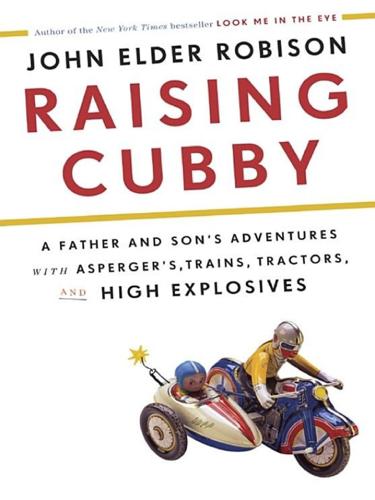
Raising Cubby: A Father and Son's Adventures With Asperger's, Trains, Tractors, and High Explosives
by
John Elder Robison
Published 12 Mar 2013
My next book will tell the story of scientists who are working to unravel the secrets of intelligence and perhaps make us all smarter. Autism is described as a developmental delay, and researchers at CMU/Pitt and elsewhere are now exploring the idea that autistic people may develop certain brain pathways much later in life than “neurotypical” people. I’ve always wondered how my son could be “nearly normal” in first grade, and “nearly a genius” on a different IQ test fifteen years later. The question remains to be answered. I mentioned executive function and organization several times in this book. That’s a big problem for many autistic people; indeed, it’s a problem for many people of all sorts.

Mind in Motion: How Action Shapes Thought
by
Barbara Tversky
Published 20 May 2019
If you are interested in how well you can read faces, there’s a five-minute test you can take and that thousands of others have taken, the Mind in the Eyes test. It shows you photos of only the eyes and eyebrows of real people and asks you to select which of four emotional states the eyes express. On average, more-educated people outperform less-well-educated people, women outperform men but only slightly, and neurotypical people outperform people with conditions that compromise recognition of emotion such as Asperger’s, schizophrenia, and anorexia. An analysis of more than eighty-nine thousand people who completed the test and volunteered their genetic information confirmed a genetic basis. A separate study showed that performance of identical twins is more similar than performance of unrelated people, more evidence for a genetic basis.
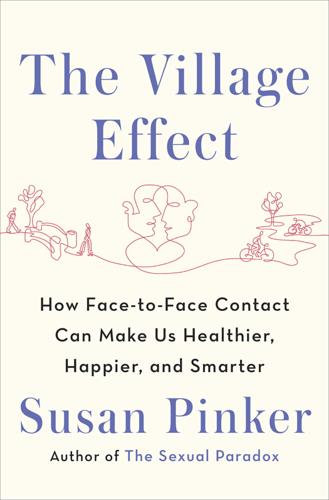
The Village Effect: How Face-To-Face Contact Can Make Us Healthier, Happier, and Smarter
by
Susan Pinker
Published 30 Sep 2013
Marco Iacoboni, Mirroring People: The Science of Empathy and How We Connect with Others (New York: Picador, 2008). 15. Ibid. 16. In The Age of Empathy, Frans de Waal points out that, remarkably, children on the autistic spectrum are immune to the yawns of others, which is just one sign that they don’t perceive social signals the same way as “neurotypicals.” De Waal, Age of Empathy. 17. Iacoboni, Mirroring People; Seymour M. Berger and Suzanne W. Hadley, “Some Effects of a Model’s Performance on an Observer’s Electromyographic Activity,” American Journal of Psychology 88, no. 2 (1975). 18. Jared Curhan and Alex Pentland, “Thin Slices of Negotiation: Predicting Outcomes from Conversational Dynamics Within the First Five Minutes,” Journal of Applied Psychology 92, no. 3 (2007); Alex Pentland, Honest Signals: How They Shape Our World (Cambridge, Mass.: MIT Press, 2008). 19.

The Panic Virus: The True Story Behind the Vaccine-Autism Controversy
by
Seth Mnookin
Published 3 Jan 2012
“It makes people uncomfortable,” says Jane Johnson, who is the managing director of the Autism Research Institute and is a member of the family whose ancestors founded the multinational pharmaceutical and medical devices company Johnson & Johnson. “Particularly for women, many of our friends are based around child rearing. . . . If you’re sitting there with your neurotypical child and your friend Suzy is there with her autistic child, you’re going to feel really uncomfortable when your child is running up and saying, ‘Mommy, mommy, I just went down the slide’—and Suzy’s child can’t speak. You’re going to cringe if you’re a sensitive person with every word that comes out of your child’s mouth, knowing how Suzy doesn’t get those same experiences.
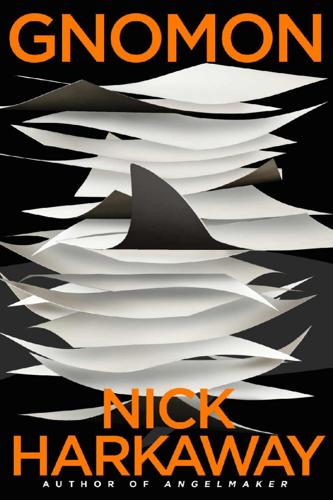
Gnomon
by
Nick Harkaway
Published 18 Oct 2017
Trisa, from St Albans, paternal grandmother born in Okinawa, mother once sang solo at the Albert Hall. Likes dancing but not alone, doesn’t drink, plays piano. Trisa Hinde. Hinde wears a badge with a rainbow on it. A few decades ago this would have meant something about her sexual orientation, but now it’s a polite signal to Neith and anyone else Hinde interacts with that she is not neurotypical. Her brain touches a particular peak of the modern medical taxonomy that includes some autisms and various perceptual and processing functions such as synaesthesia, and structural (rather than acquired) hypervigilance. It is not actually a spectrum in the linear sense, more a graph on several axes.